I grew up listening to my grandma’s vivid stories about living through WWII. Her memories continue to inspire my travel itineraries, and during our recent trip to Poland we stopped at a handful of prominent WWII historical sites. While it’s never easy to visit these types of places, nothing could’ve prepared us for how sobering and emotional a day trip to Auschwitz actually is. Keep reading to discover everything you need to know about touring Auschwitz – Birkenau including what to expect, which tour you should choose, how to get there from Krakow and more.
This post contains topics and details that may be upsetting or disturbing for some readers.
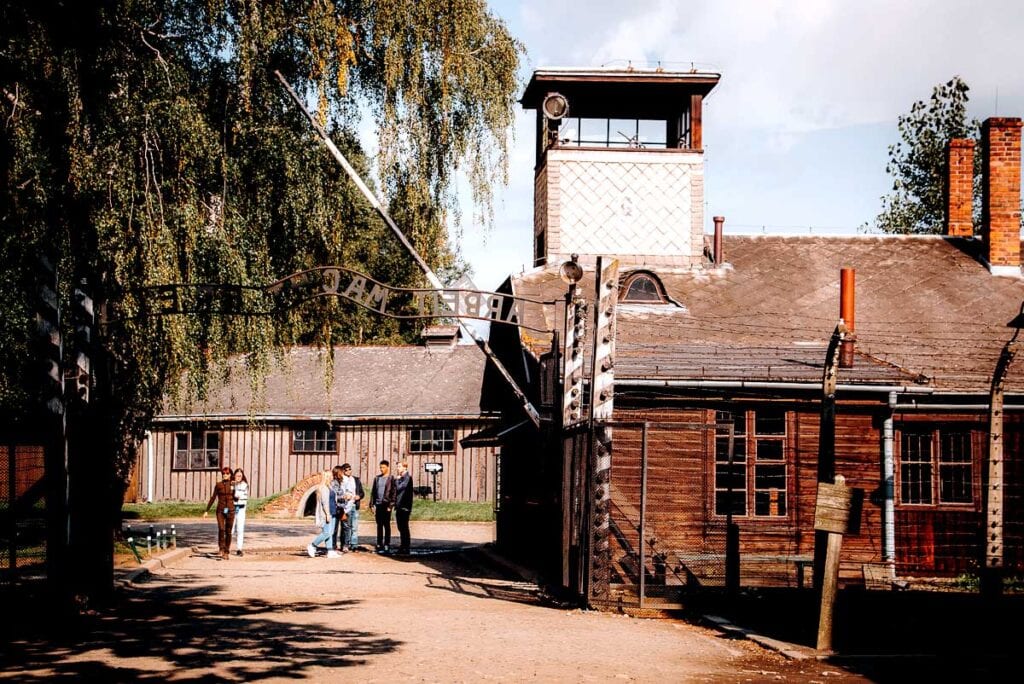
Table of Contents
WHAT IS AUSCHWITZ – BIRKENAU ?
When you hear the word Auschwitz, chances are a very specific feeling arises within you. Its name is so synonymous with the Holocaust that there are not many people who don’t know about Nazi Germany’s most infamous concentration & extermination camp.
Auschwitz was constructed in 1940 under the orders of Heinrich Himmler. It was originally created as a concentration camp, but its close proximity to 44 different railway lines made it “ideal” as the central death camp meant to carry out Hitler’s “Final Solution.”
Auschwitz was known for the horrific treatment of its prisoners. Starvation, torture, shooting squads, human medical experiments and gas chambers were commonplace, and it is estimated that over 1.1 million people died here.
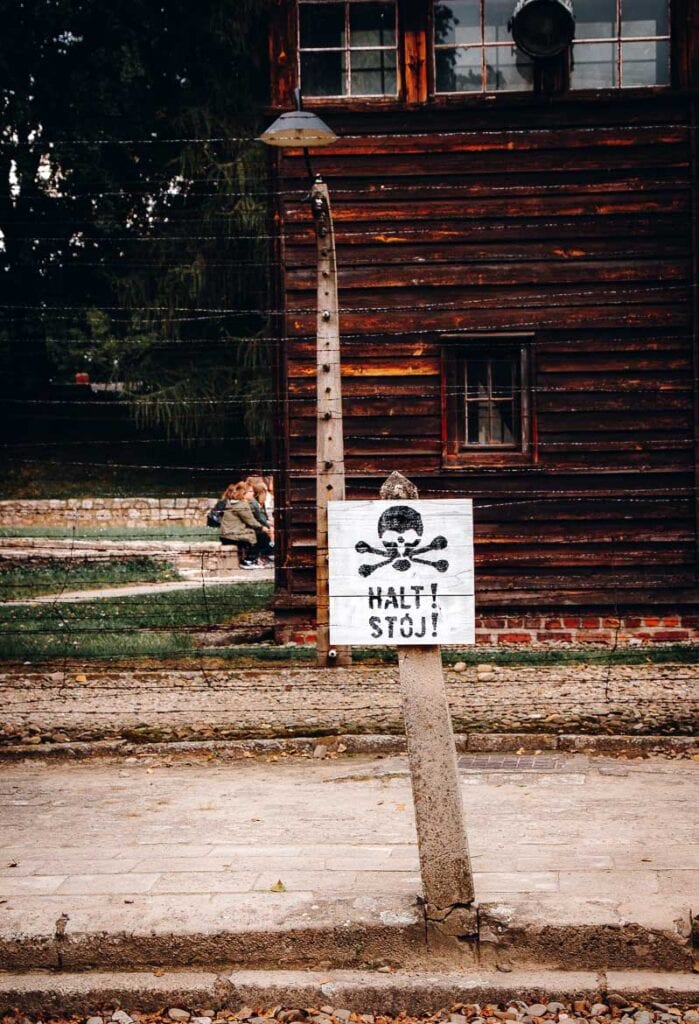
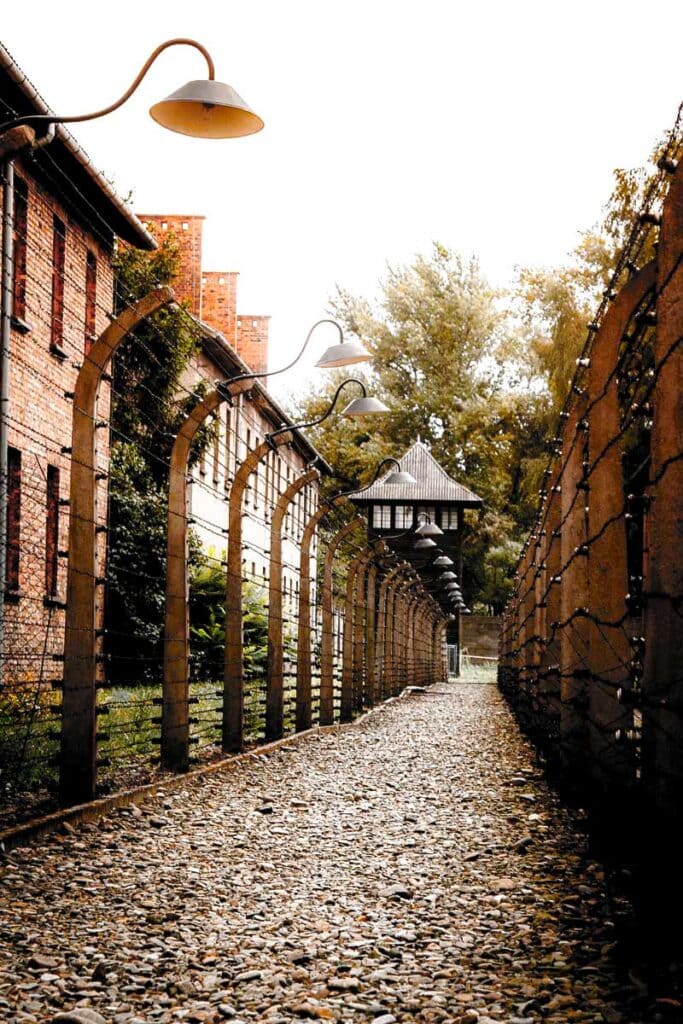
Located in Oswiecim, 41 miles (66 km) from Krakow, Auschwitz was made up of three different camps. Auschwitz I was the main camp, Auschwitz II (also known as Birkenau) was the killing camp and Auschwitz III (also known as Monowitz) was a forced labor camp.
Today, Auschwitz has been converted into a memorial that sees over 2 million visitors each year. It stands as a dark reminder of the past as well as a stark warning for future generations
RELATED POST: SCHINDLER’S FACTORY MUSEUM (KRAKOW) – A VISITOR’S GUIDE
AUSCHWITZ TOUR OPTIONS
Admission onto the grounds of Auschwitz and Birkenau is free but you will need an entry card before visiting. Entry cards can be reserved on visit.auschwitz.org, and it is best to do so in advance to ensure that the time slots do not fill up.
While general admission is free, I highly recommend visiting Auschwitz with a guide. Guided tours are not something I normally opt into as I usually prefer to go at my own pace. However, viewing this memorial was exponentially more profound with a guide. There are so many details, stories, context and information you receive on a guided tour that the informational plaques did not offer. I cannot imagine touring the grounds and missing out on the knowledge we received.
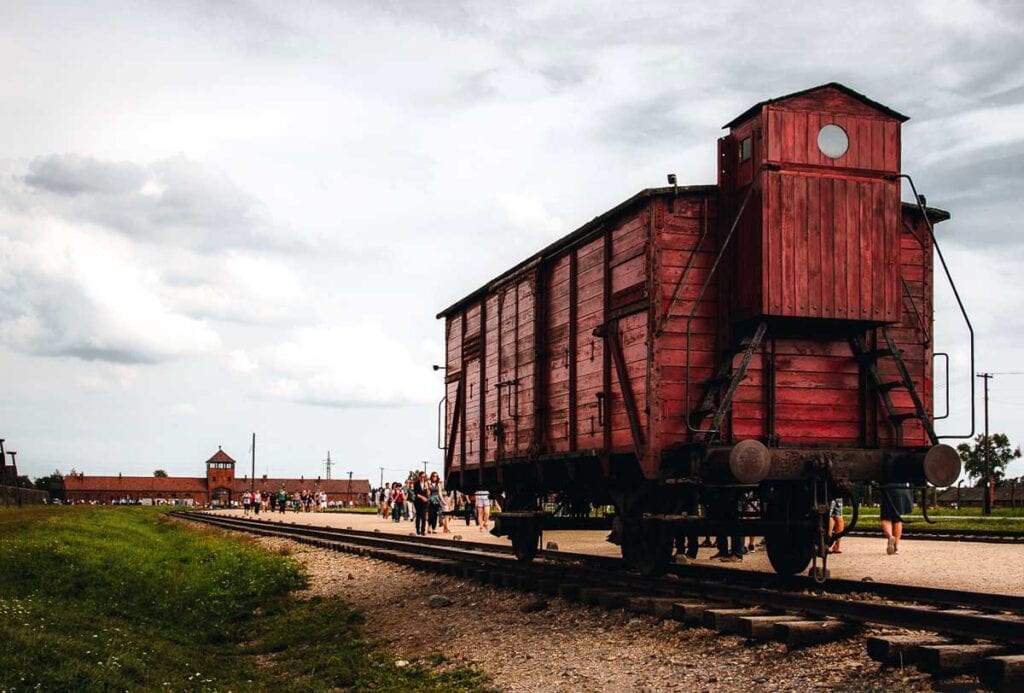
Auschwitz offers several options for guided tours, the general 3.5 hour tour and the full day study tour (6 hours). Each of the tour options will take you to both Auschwitz I and Birkenau (Auschwitz II).
We decided to go with the 6 Hour Study Tour because 1-1.5 hours didn’t seem like enough time in each camp. Also, the 6 hour tour takes you to a few more sites within Auschwitz I.
THE 3.5 HOUR TOUR
REGULAR ADMISSION 85 PLN ($23USD)
REDUCED ADMISSION (Seniors 75+, Students under 26, people with disabilities) 75PLN ($20.50USD)
THE 6 HOUR STUDY TOUR
REGULAR ADMISSION 125 PLN ($34USD)
REDUCED ADMISSION (Seniors 75+, Students under 26, people with disabilities) 105 PLN ($28.65 USD)
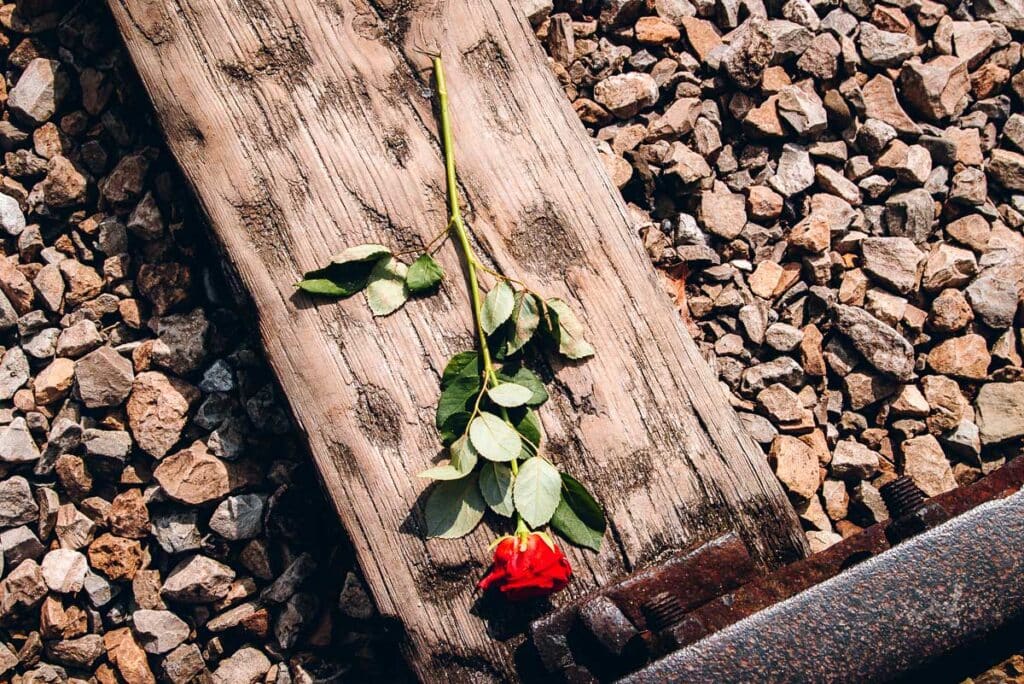
OTHER OPTIONS FOR TOURING AUSCHWITZ
It is not mandatory to book a tour with the memorial directly. You are free to hire your own private tour guide or book a tour with an outside company, like this one from Get Your Guide which includes transportation to and from Krakow.
If you choose to tour the memorial without a guide, I highly recommend purchasing a guidebook from the bookstore. There are informational plaques available throughout the memorial, but they contain very basic information. Birkenau in particular is much more raw and there was not a lot of reading information available.
The memorial prioritizes tour groups, so those touring Auschwitz without a guide might have less options as far as available entry times. Be sure to book your entry far enough in advance to ensure your visit.
TOURING AUSCHWITZ I : THE 6 HOUR STUDY TOUR
If you’ve chosen the option of touring Auschwitz with a guide, you will begin the day at Auschwitz I. After you are paired with your group, you will enter the memorial by passing under the familiar iron gate with the infamous German slogan that reads “Arbeit Macht Frei,” or “Work Sets You Free.” Darkly ironic and very untrue for the millions that lost their lives here.
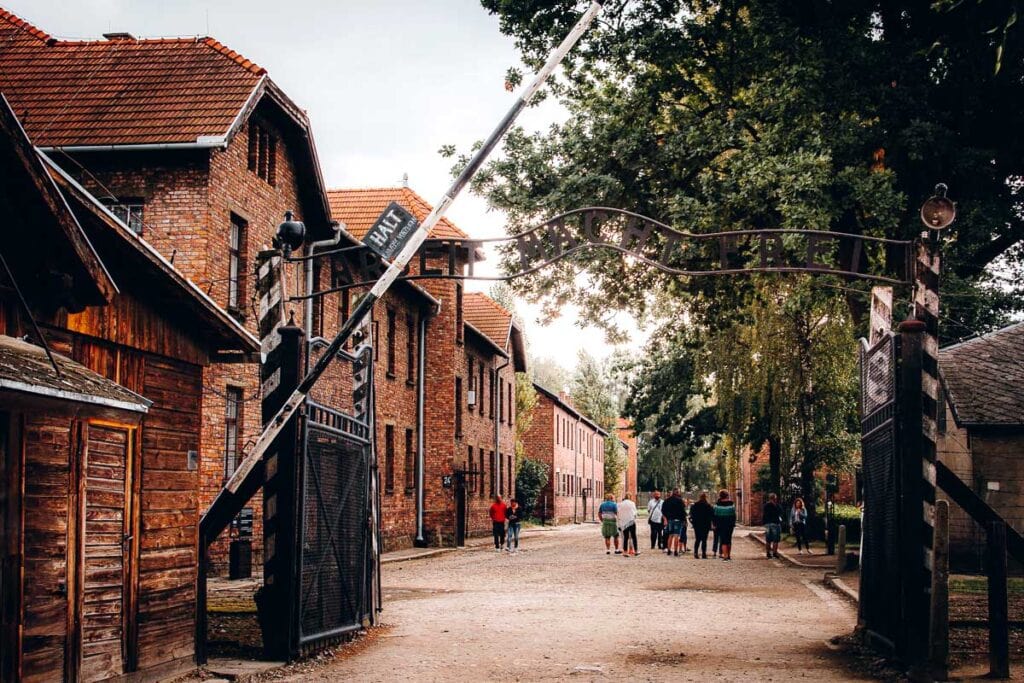
Throughout the tour, the guide whispers into a microphone which transmits to your individual headsets. If you take your headphones off at any point during the visit, the grounds are almost completely silent, aside from the shuffling of feet and the faint whispers of guides. It feels appropriate given the setting.
THE MUSEUM
You will be led through several different barracks which have been converted into a museum space containing original Nazi documents, deportation logs, prisoner files, letters and volumes upon volumes of the former camp’s death books. There are black and white photographs depicting scenes from the camp, as well as displays containing the personal belongings of the prisoners.
Before the Soviets liberated the Jewish people, Nazi’s burned most of the evidence from Auschwitz and Birkenau. Whatever didn’t burn is on display in Auschwitz I.
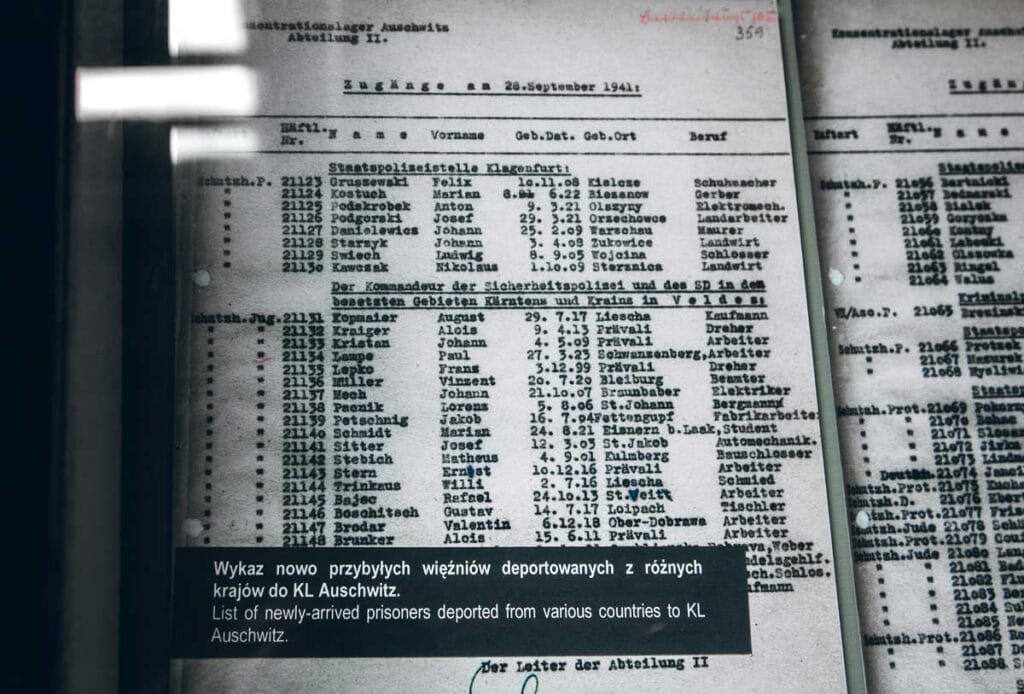
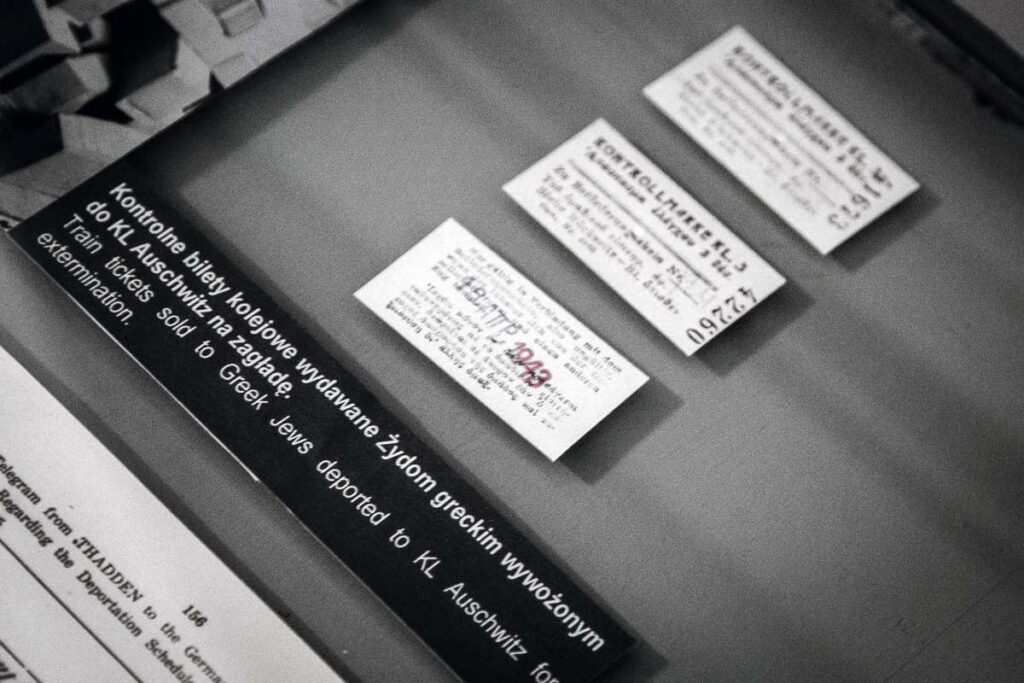
PRISONER BELONGINGS
According to the Museum Preservation Department, the memorial features 110 thousand shoes, around 3,800 suitcases, 12,000 pots and pans, 88lbs (40 kg) of eyeglasses, 470 prostheses, 570 items of camp clothing and over 4 thousand works of art.
The most moving displays for me personally were the stacks suitcases and the shoes. Prisoners were told to take their valuables out of their suitcase and write their names on their luggage, as if they would ever see it again. In another room, over 25 thousand shoes lay in piles. They represent a single day of victims during the peak of the exterminations.
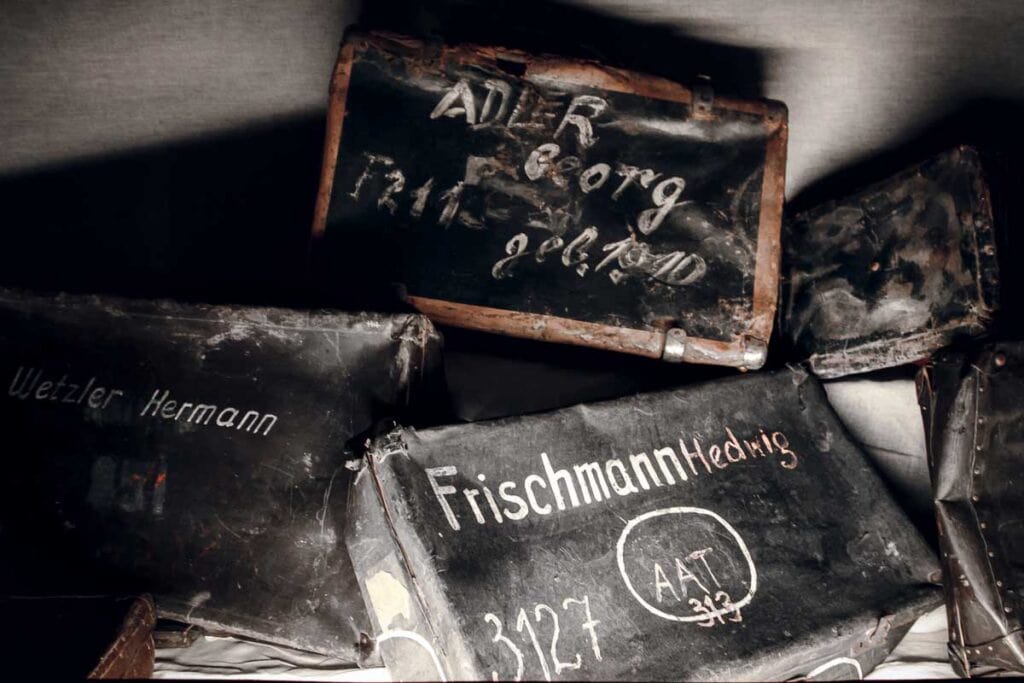
One of the most difficult rooms to get through contains a glass display which spanned the entire length of the room. Behind the glass, piled approximately 7 feet high is the hair of 40,000 women. Hair that had been cut off after the prisoners were exterminated in the gas chambers. The memorial asks that you abstain from taking photos in a few of the rooms, this being one of them.
THE DEATH WALL, BLOCK 11 & THE GAS CHAMBERS
As part of the Auschwitz 6 Hour Study Tour, you are taken into the brick barracks where you will view what living conditions were like for the prisoners. You will also tour Block 11, more commonly known as the Death Block, which was a series of punishment rooms where prisoners received the most ghastly and inhumane treatments. Our guide explained how people were forced to stand in tiny cells for a minimum of three nights in a row, after working 11 hour days on little to no food. Then there was the dark, concrete room with no light or airflow. We were told that most people suffocated overnight in that one.
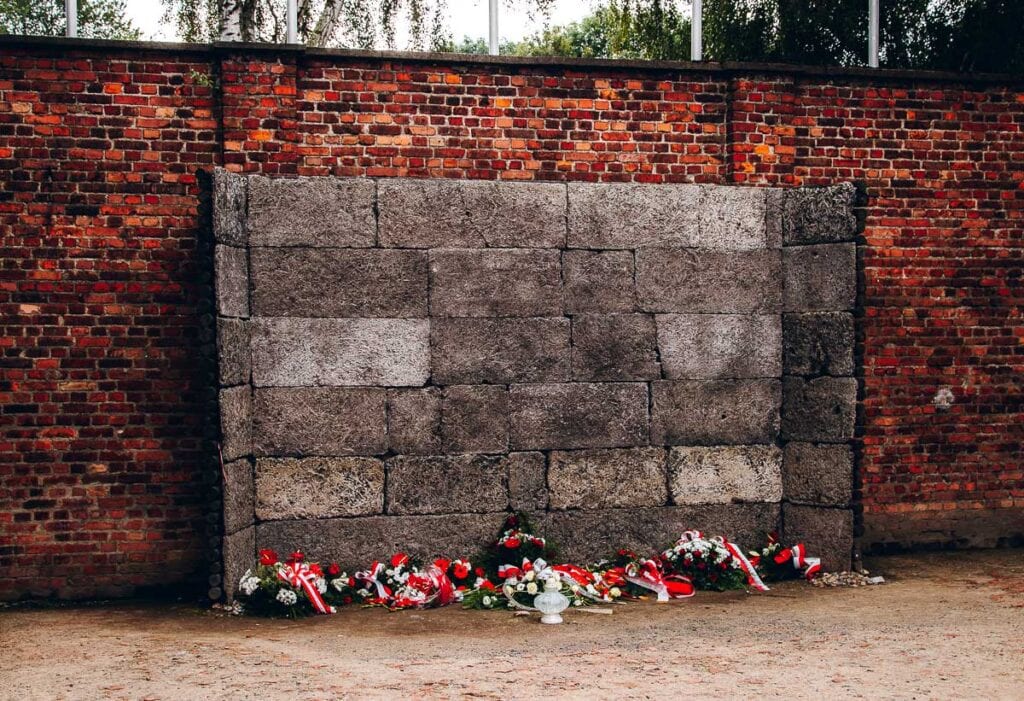
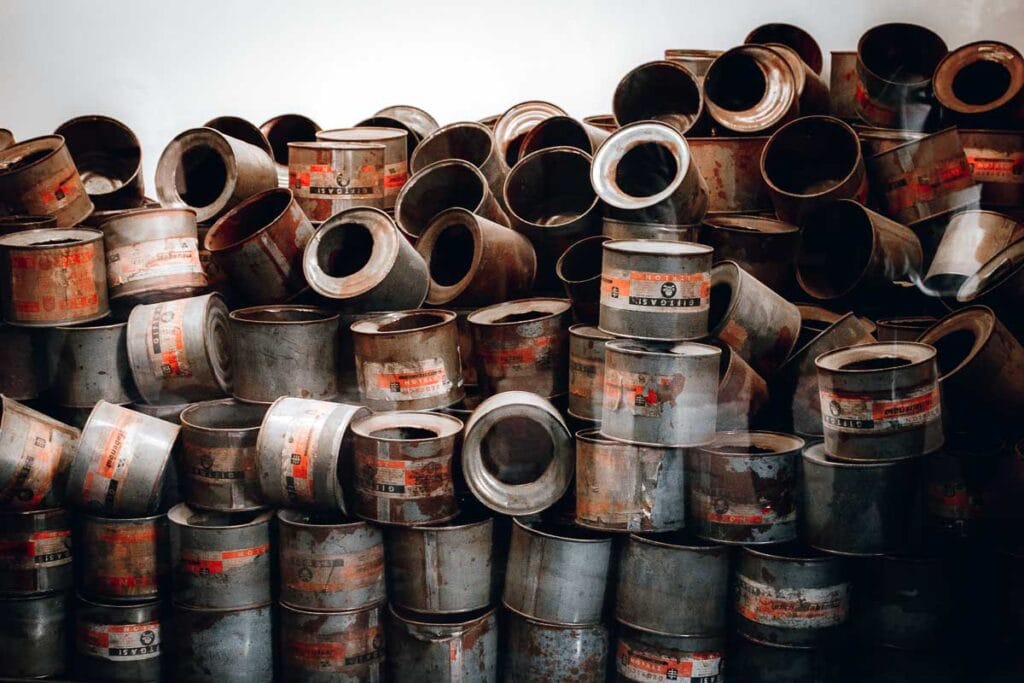
As you make your way through the former camp, there is a tangible weight in the air. Dark lookout towers loom above you which add to the growing pit in your stomach. You will pass the Death Wall, where executions took place and enter a gas chamber where hundreds of thousands lost their lives. You’ll also view a display containing empty cans of Zyklon B, the poison used in the gas chambers.
THE BOOK OF NAMES
One of the most impactful parts of Auschwitz I was a hallway lined top to bottom with photos of the prisoners. Each photograph contained the name, birthday, profession, date of entrance to Auschwitz, and date of death. In some cases the date of death was just a few days after they arrived at the camp. I tried to read as many of their names as I could, noting their profession and acknowledging who they were.
As you finish up your visit at Auschwitz I, you will enter one last room which which contains The Book of Names, a 6.5 foot tall book containing the 4 million names of the Holocaust victims.
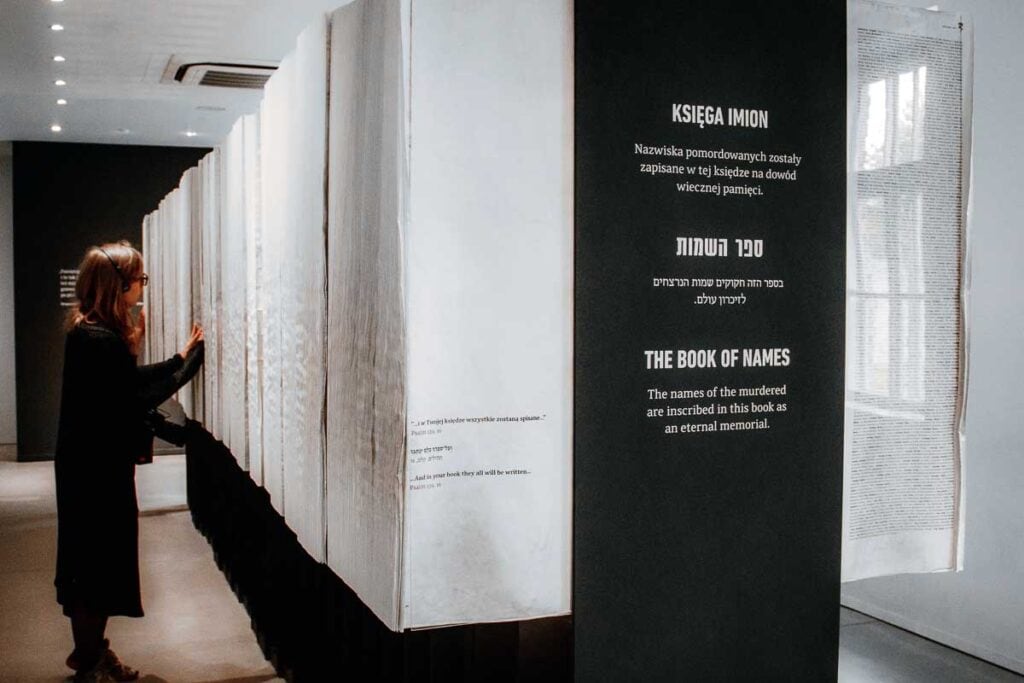
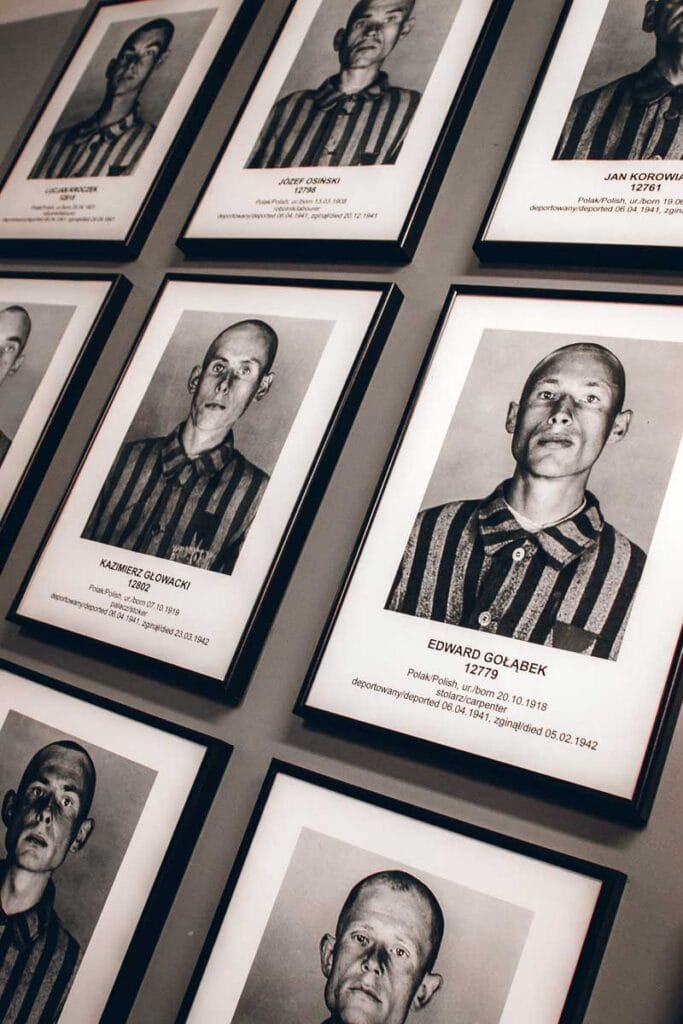
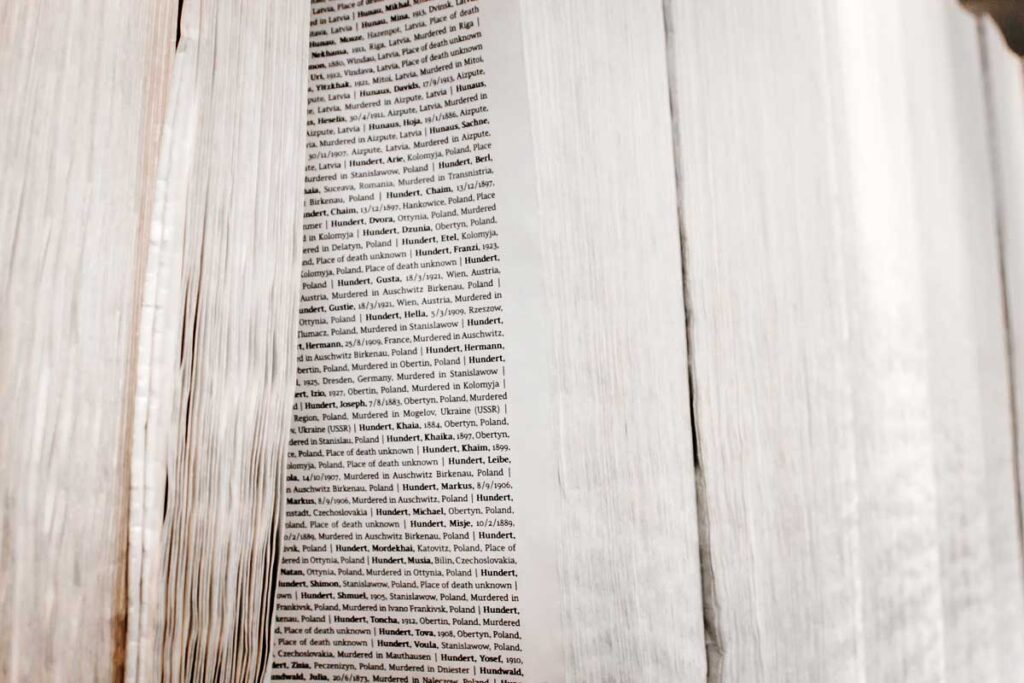
THE SHUTTLE TO BIRKENAU
After the first half of the tour ends at Auschwitz I, your guide will give you a quick 30 min break and then let you know where and when to meet the shuttle to Birkenau. You can choose to walk around the memorial a little longer or grab something to eat (if you have an appetite).
Birkenau is located 2.1 miles (3.5km) from Auschwitz I and the shuttle is free for all visitors traveling with or without a guided tour. The Birkenau shuttle leaves every 10 minutes from April-October and every 30 minutes between November and March. They are first come first serve and fill up quickly.
RELATED POST: A VISITOR’S GUIDE TO THE LATVIAN HOLOCAUST MUSEUM IN RIGA
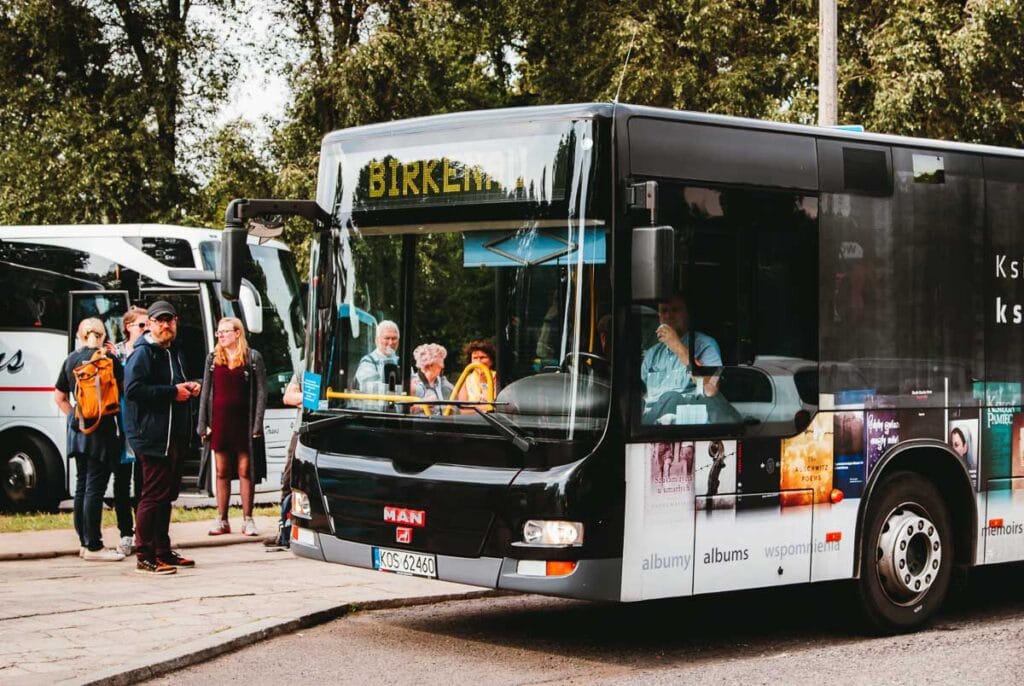
TOURING BIRKENAU (AKA AUSCHWITZ II)
During the war, Auschwitz I was not physically able keep up with the number of people being sent there so they started using Birkenau, also known as Auschwitz II, as an overflow camp.
Birkenau eventually became Nazi Germany’s largest extermination camp, and it was here that most of Auschwitz’s victims died. The grounds of Birkenau are massive and could hold 100,000 prisoners at a time. It took us 20 minutes to walk from one end to the other.
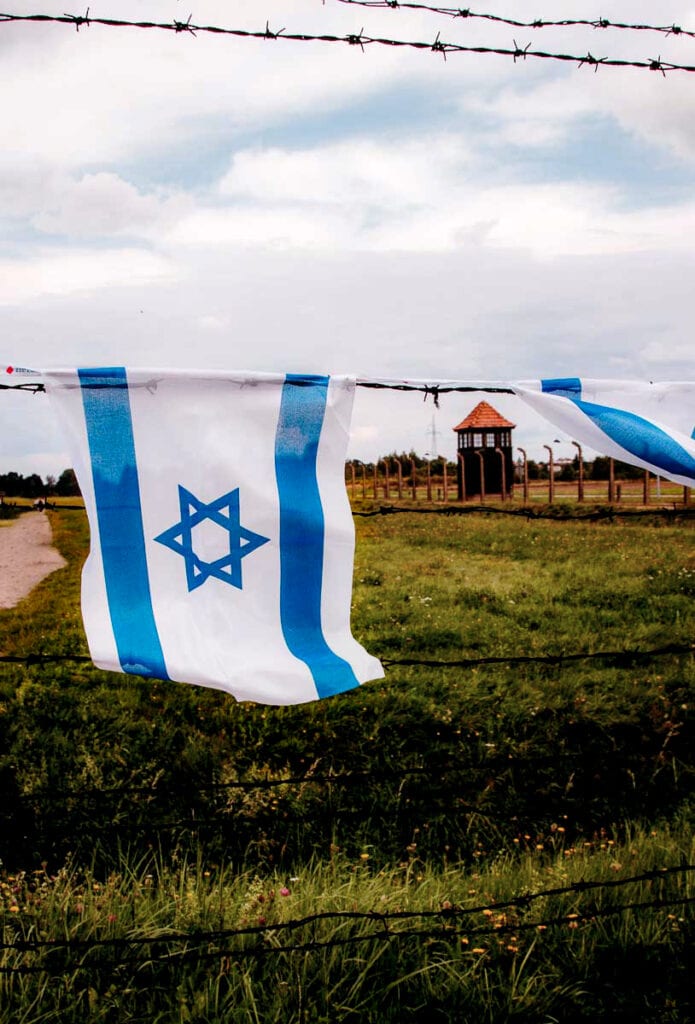
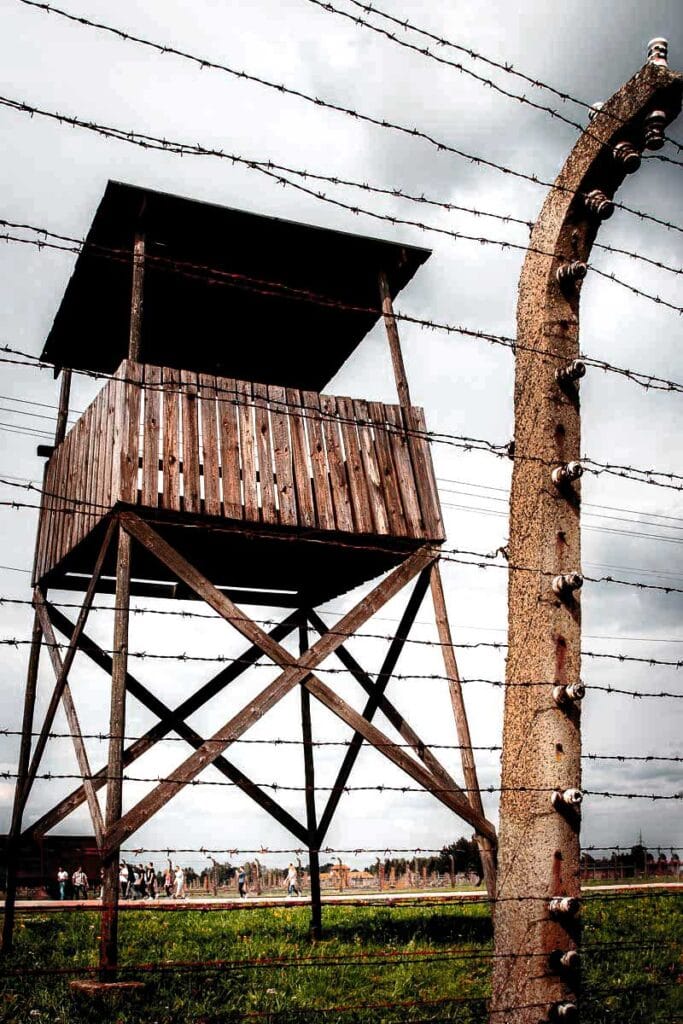
RUINS AT BIRKENAU
Unlike Auschwitz I, Birkenau is not a museum. For the past 76 years, the site has remained almost exactly in the same state in which it was found. Before liberation day in 1945, the Germans attempted to burn Birkenau down, so a lot of what you’ll see is just ruins.
Most of the living quarters are gone, with brick chimneys standing where many of the wooden barracks used to be. The gas chambers and crematoria were also destroyed, their ruins remaining exactly as they were found.
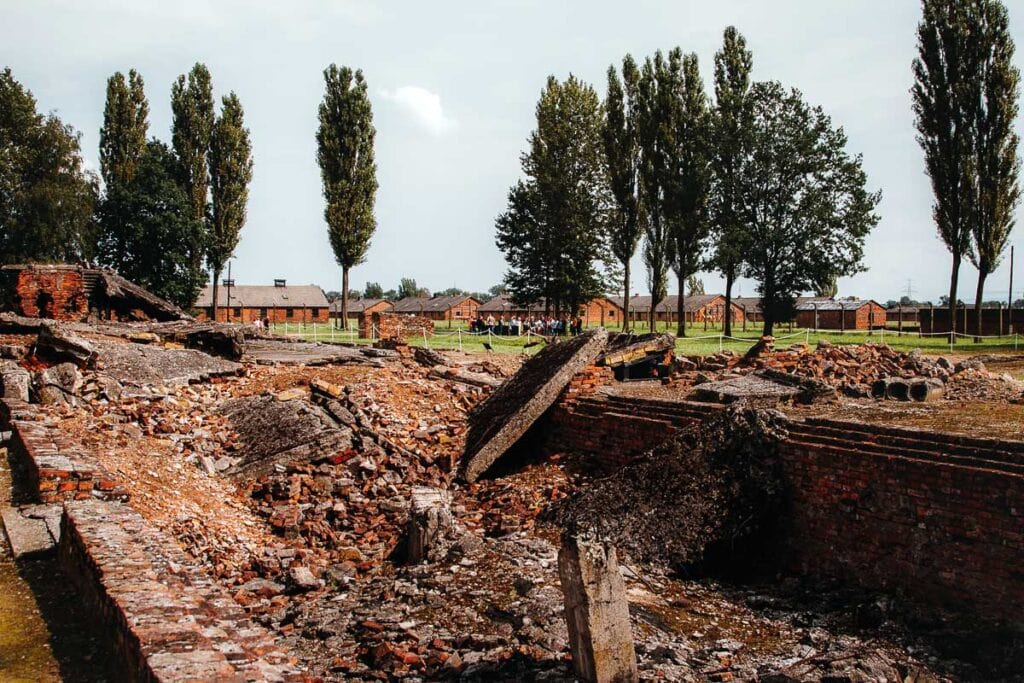
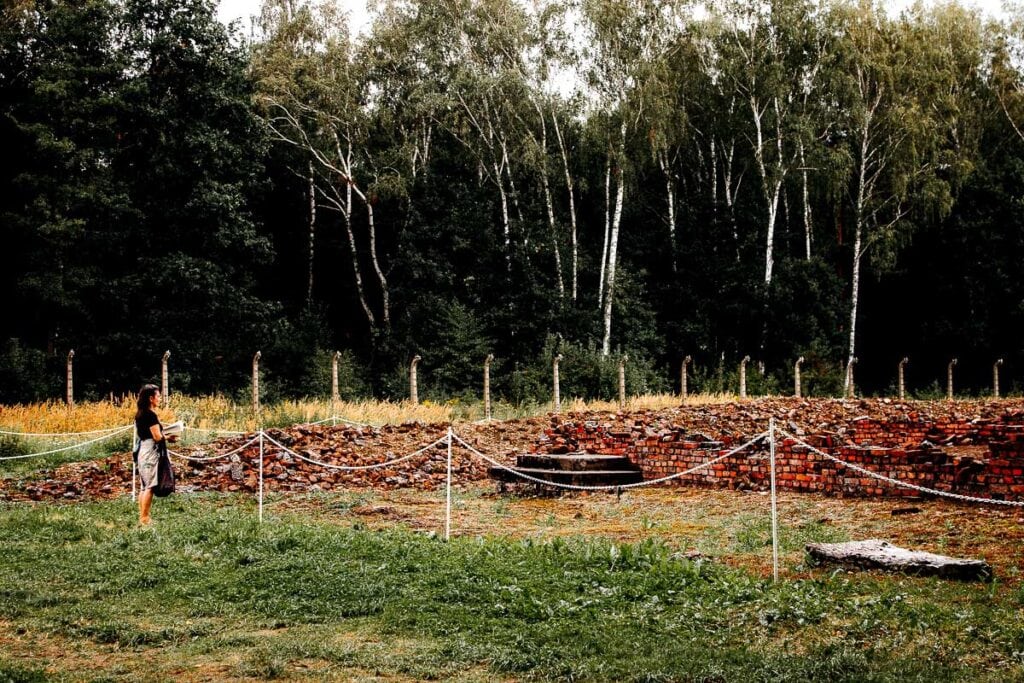
THE SELECTION RAMP
One of the most haunting images of Birkenau is the single railway track running down the center of the former camp. In the middle of the central road next to the tracks, there is an intersection where the unloading ramp was. It is here here that prisoners were put through the selection process.
When a new train car arrived at Birkenau, prisoners were forced out of the carts and immediately examined by a doctor. If a person was deemed healthy enough to work, they were sent down the road to the right, registered as a prisoner and assigned a number. If they failed the exam, they were sent down the road to the left which led straight to the gas chamber. Children under 16, the elderly and people with disabilities were also automatically sent to the left.
It is extremely sobering to stand at the cross street where millions of people’s fate was decided in a single instant. It is completely impossible to comprehend.
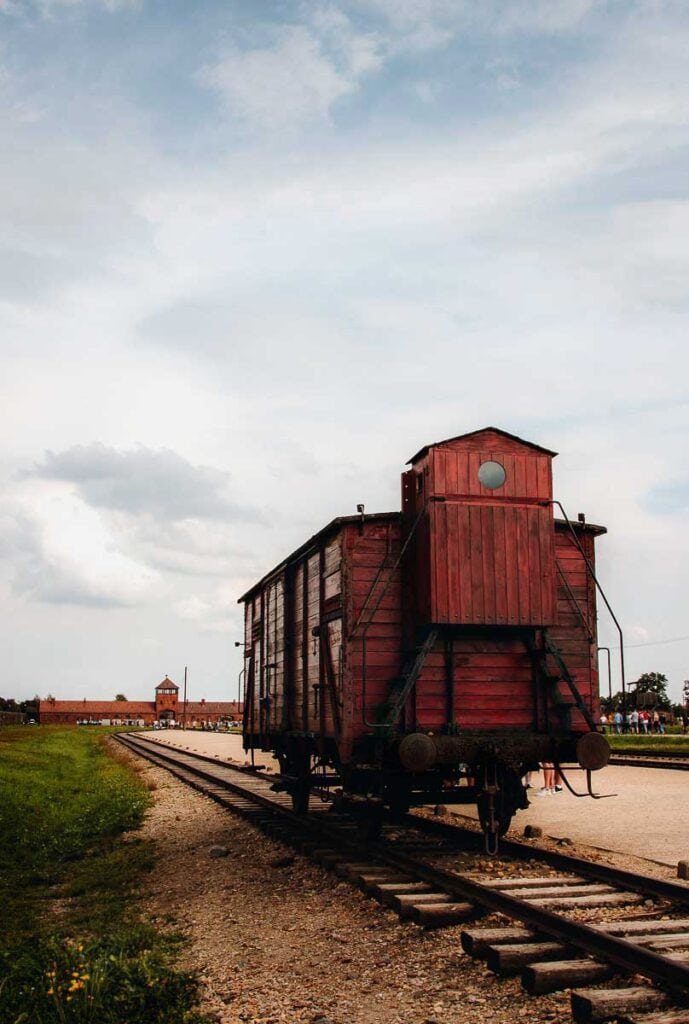
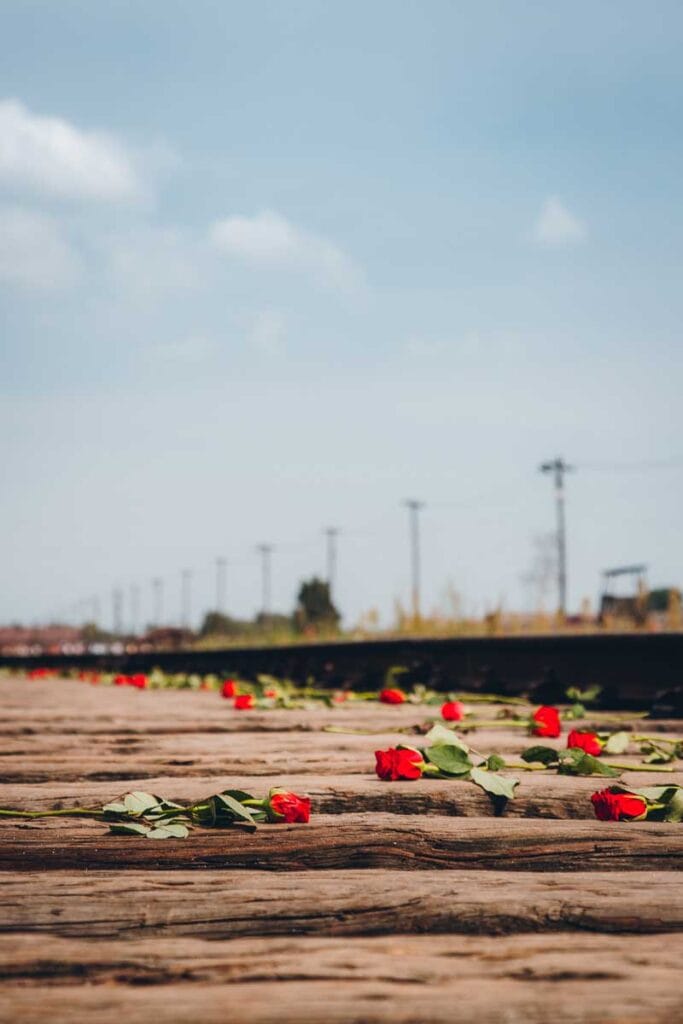
PRISONER BARRACKS
On our tour of Birkenau, our guide led us through the men, women and children’s barracks. This was one of the hardest parts of the visit.
Seeing in person just how small the bunks were, and trying to imagine up to 10 prisoners on each level of the bunk was incomprehensible. We were told that new prisoners were forced to sleep on the ground, which was covered in diarrhea and inhabited by rats.
Next you will enter one of toilet barracks, which was just a concrete block with 58 holes. Prisoners were “allowed” a once daily visit (everyone at the same time) for just a few minutes and would have to fight for a seat. Otherwise they didn’t get to use the toilet that day.
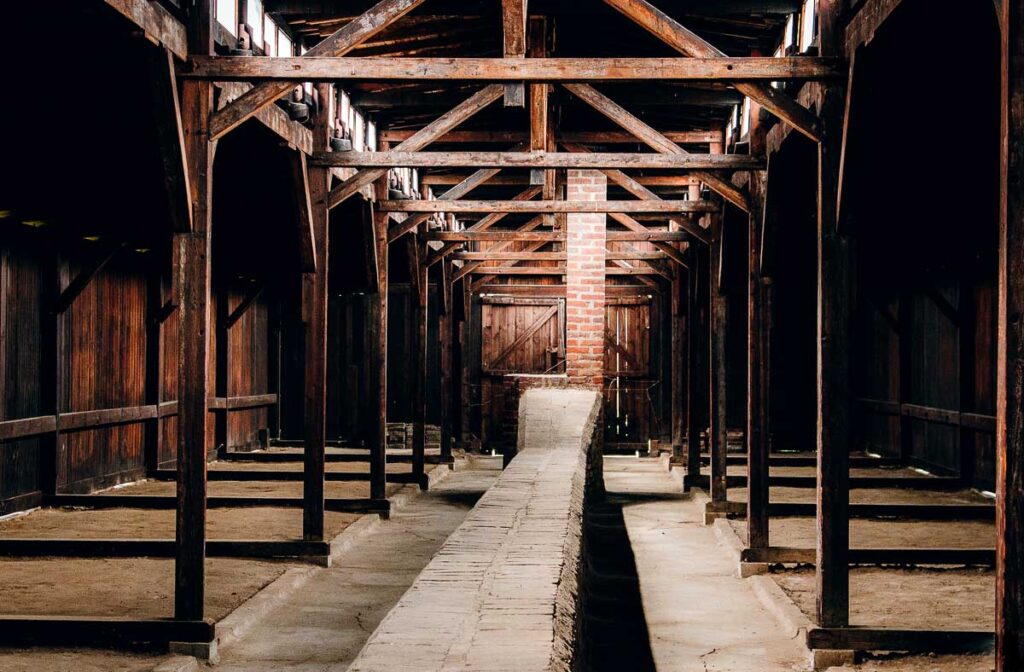
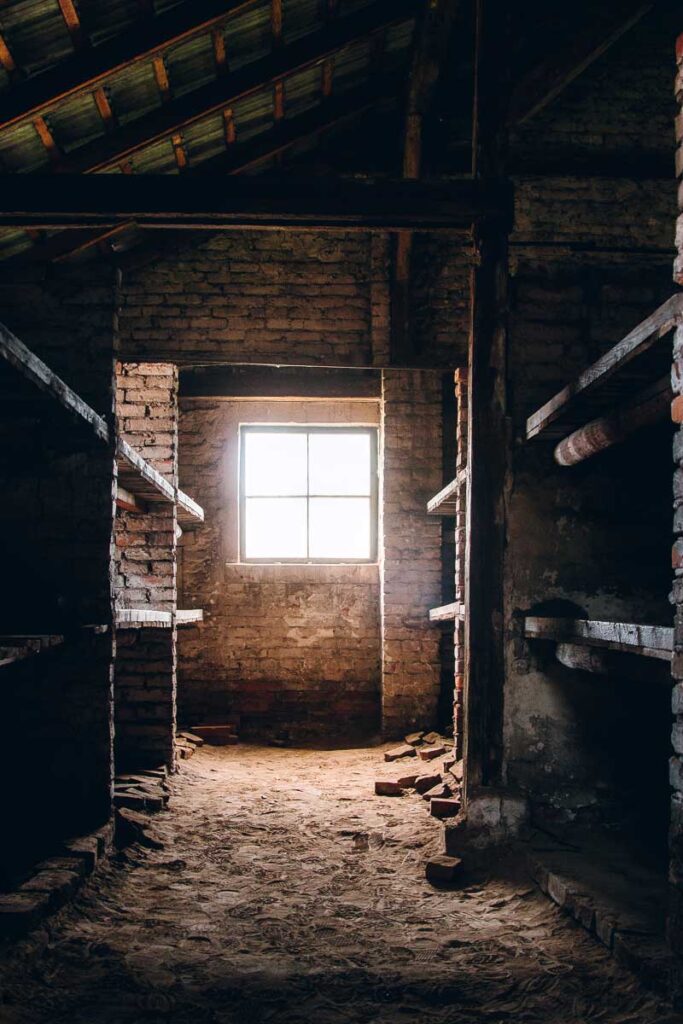
WRAPPING UP THE 6 HOUR STUDY TOUR
Toward the end of the tour, you are taken through the bathhouse and disinfection area where prisoners were selected for labor, strip searched and shaved.
The last stop of the tour is an exhibit filled with family photos that belonged to the prisoners of Auschwitz. These photos were found on the grounds of the former camps and it was a powerful way to wrap up an intense day. Throughout your visit, you will hear the most horrific details and see photos upon photos of the prisoners in striped uniforms, identified only by numbers. This exhibition gave the victims back their names and identities.
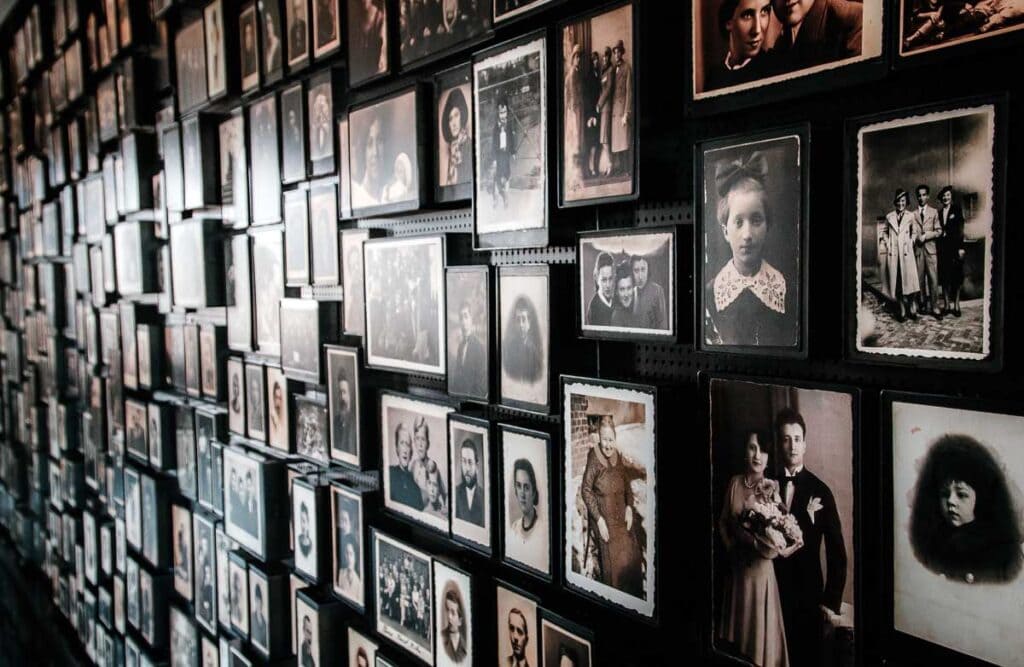
The tour ends here and your guide will say goodbye. You are then free to walk around the grounds on your own, or catch the shuttle bus back to Auschwitz I. Since I felt rushed during the entire tour, we stayed for another hour to just sit and process everything we’d seen.
FINAL THOUGHTS ON THE 6 HOUR STUDY TOUR
We chose the 6 Hour Study Tour because we wanted to cover as much of the memorial as possible. Unfortunately even with 6 hours, it still felt rushed – especially while touring Auschwitz I.
Auschwitz I is more of a museum, each room lined with such important information and artifacts on display. The groups filter through very quickly, only allowing several minutes to look around while your tour guide speaks. There was almost no time to stop and the read informational plaques or documents. If you want to read anything, you’ll have to do it while listening to the guide at the same time.
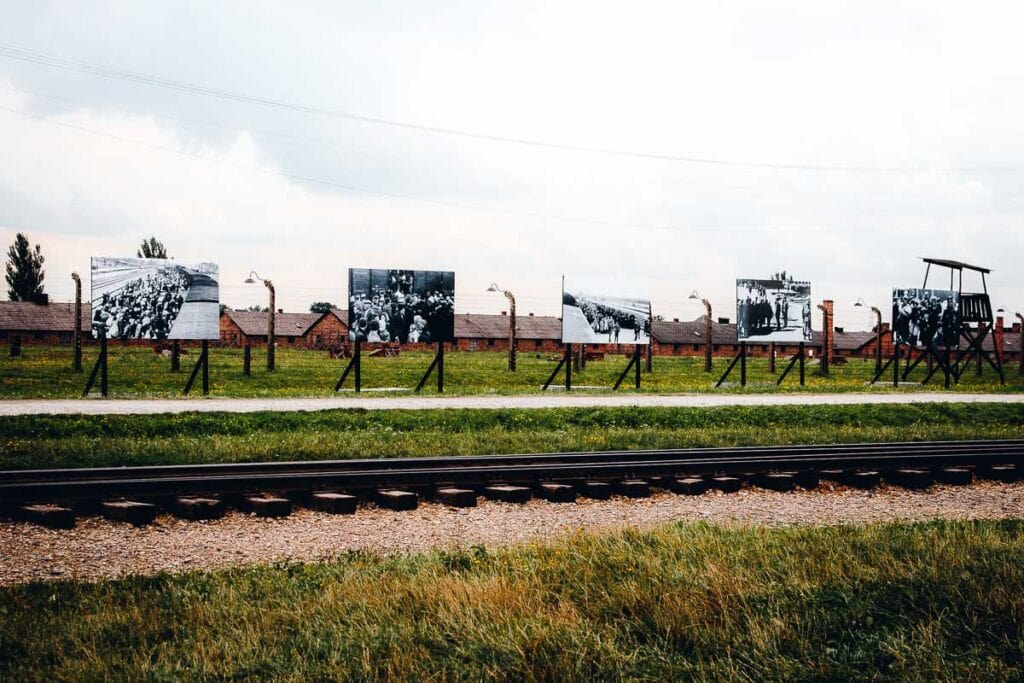
While I understand that there is a lot to see and many visitors in line to see it, the gravity of the information you’re taking in can get overwhelming and I found myself desperate for time to process before moving on. Giving visitors a few minutes to reflect in each of the larger rooms would have been ideal.
With that said, I still recommend touring Auschwitz – Birkenau with a guide. As someone who already knows a lot about the former camp, I was blown away by the information we received. Having a guide also allows you to ask questions and it really put into context the things you are viewing throughout the day.
If I were to visit again, I would still take the guided tour but I would return to Auschwitz I after the tour concludes and walk through some of the barracks one more time to see what I missed while the guide was speaking.
RELATED POST: THE TOPOGRAPHY OF TERROR AND 4 OTHER WWII SITES TO SEE IN BERLIN
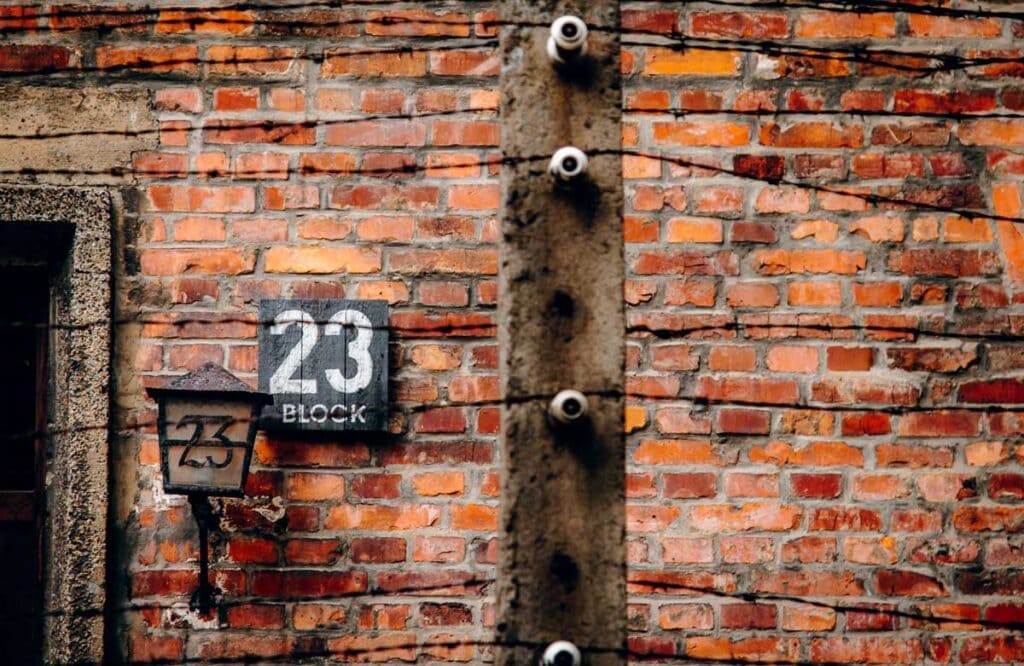
TIPS FOR TOURING AUSCHWITZ
GET THERE EARLY
The memorial can get extremely crowded and some of the rooms are very small. Signing up for an early tour will cut down on some of the crowding.
If you are touring Aushwitz without a guide, I also highly recommend showing up as early as possible. I noticed that the tour groups seemed to be given priority over single travelers and these groups take up a lot of space within the museum.
SHOW RESPECT
You are standing on the grounds where over 1 million people suffered and died. Pretending to cry in your selfies is embarrassing and screaming and laughing outside of the gas chambers is disrespectful. The memorial itself has asked visitors to not balance on Birkenau’s train tracks and to behave respectfully when taking photos.
When you come to @AuschwitzMuseum remember you are at the site where over 1 million people were killed. Respect their memory. There are better places to learn how to walk on a balance beam than the site which symbolizes deportation of hundreds of thousands to their deaths. pic.twitter.com/TxJk9FgxWl
— Auschwitz Memorial (@AuschwitzMuseum) March 20, 2019
BE PREPARED TO WALK
Both of the former camps are huge and you are going to cover a lot of ground during your visit. Be prepared for a lot of walking and wear comfortable shoes.
TOILETS
There are toilets at both Auschwitz I and Birkenau. Be sure to bring change as they cost 2 zloty to use.
GO WITH A GUIDE
Even though touring Auschwitz – Birkenau with a guide felt a little rushed in some parts, I still highly recommend visiting with a tour. Unless you are a historian or an expert on the subject, having a knowledgeable guide will help to paint a more complete picture, and delivers the impact that this memorial deserves.
BOOK YOUR TICKETS IN ADVANCE
Tickets sell out quickly during peak season, so make sure to book far enough in advance. You can book up to three months out. Tickets are available on the official website here, or through Get Your Guide here.
Those who plan to tour the memorial without a guide might have less options as far as available entry times, so it is very important that you book in advance. You need a reservation whether or not you are visiting with a guide.
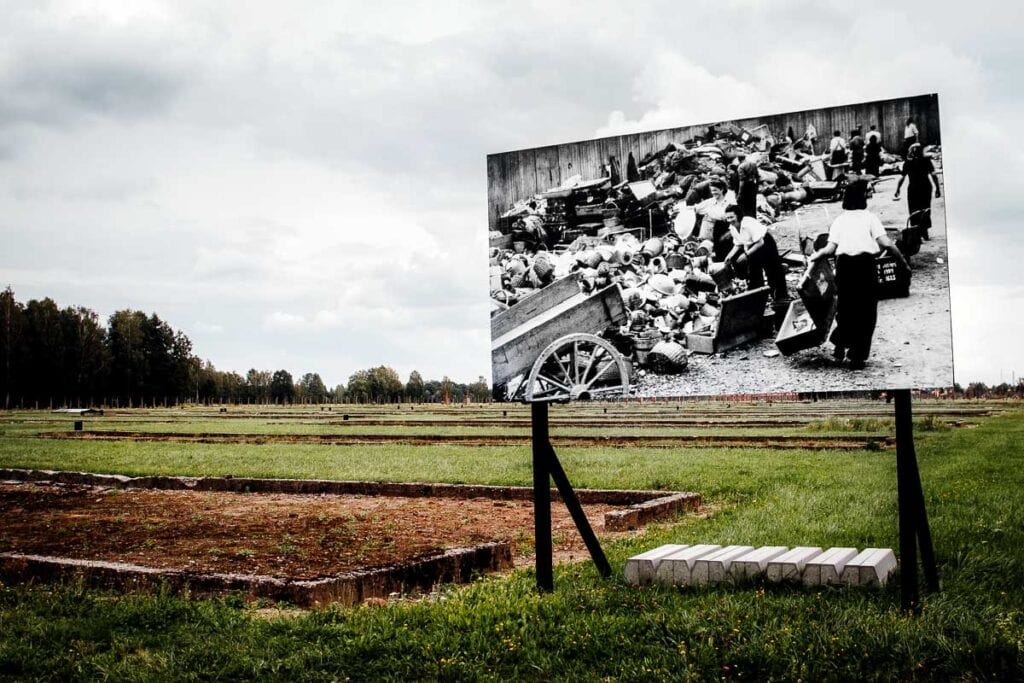
PACK FOOD/WATER
There is a cafeteria style restaurant at Auschwitz I but it was expensive and the food did not look very appetizing. Since you’ll be doing a lot of walking during your tour, packing water and snacks (or a light meal) is smart.
Keep in mind that you are not allowed to eat inside of the memorial but your guide will give you a 30 minute break before you get on the shuttle to Birkenau, which is the perfect time to re-fuel.
NO TRIPODS OR FLASH
Photography is allowed at Auschwitz with the exception of a few specific areas. You cannot take photos in places that contain human remains, such as the room with the display of human hair, Block 4, Block 11 or the crematorium. Flash photography is never permitted and tripods are also not allowed.
LEAVE YOUR ITINERARY OPEN IN THE AFTERNOON
Touring Auschwitz is extremely draining and you will probably need time to process what you’ve seen and heard from the day. Keep your itinerary open the afternoon of your visit to allow yourself time for decompression and reflection.
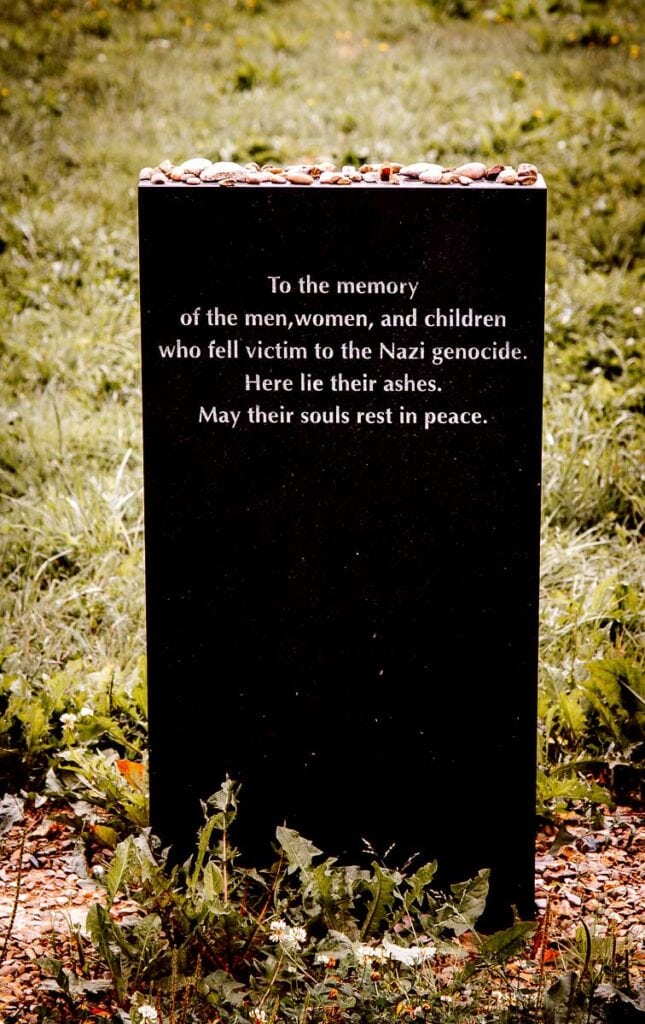
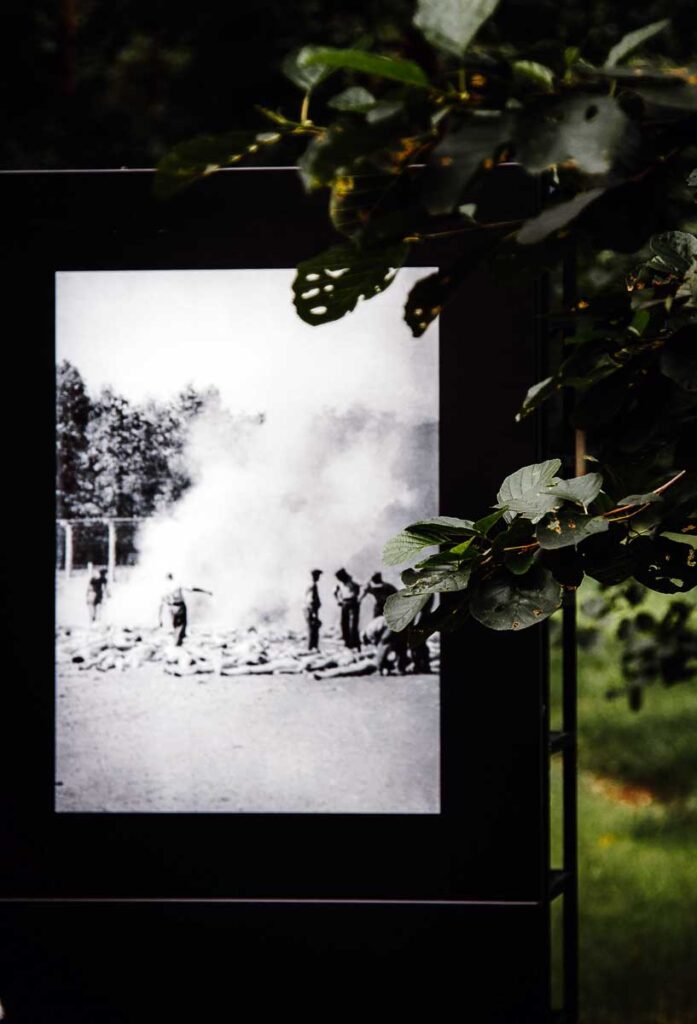
LEAVE YOUR STROLLER IN LUGGAGE STORAGE –
You are allowed to bring your stroller into the memorial but if possible, you might want to think about leaving it in the luggage storage area. Not only is the ground is uneven (a mixture of dirt, pavement and gravel), but there are stairs, no ramps and you are not allowed to bring it inside of the buildings.
PACK A SMALL BAG
If you are carrying a bag larger than 30x20x20cm (11.8 x 7.9 x 7.9 inches) it needs to be checked in the baggage area (diaper bags excluded). The luggage storage lines can get long and it costs 8 zloty to use, so pack light and avoid the hassle.
AGE RESTRICTIONS
The official museum guidelines state that visits from children under 14 are not recommended.
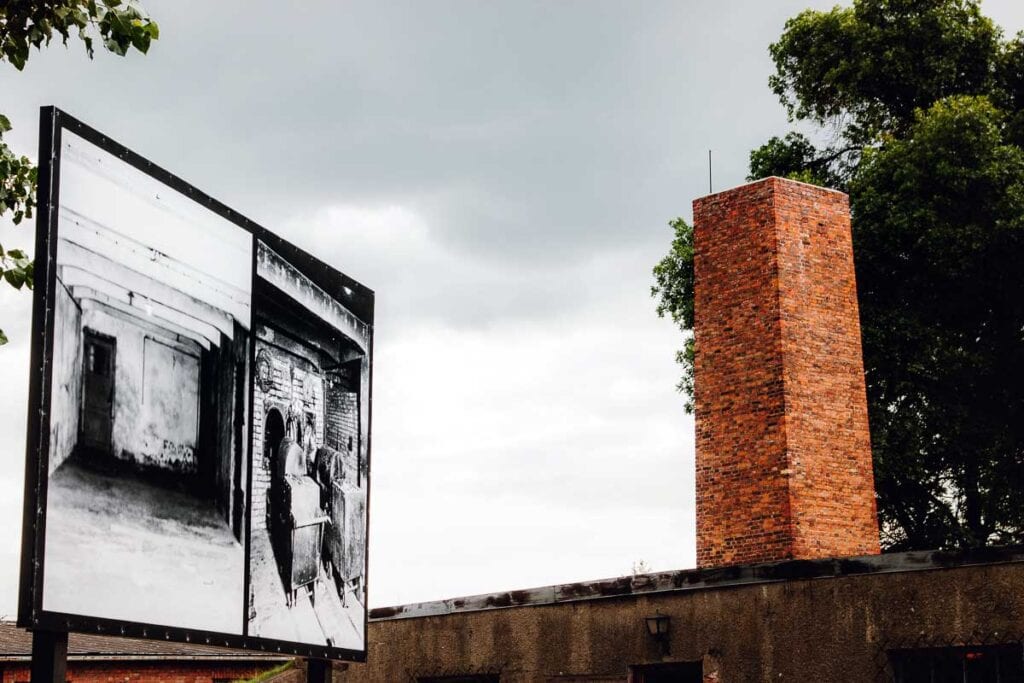
ADDITIONAL READING
If you will be touring Auschwitz in the near future, I highly recommend packing one of these these books for the plane before you go.
Night by Elie Wiesel has been deemed one of the most influential books about the Holocaust. Wiesel was a Jewish teenager who was deported to Auschwitz with his family. His book is based on his horrifying experiences at Auschwitz I, Birkenau and Buchenwald concentration camps.
Auschwitz and After was written by Charlotte Delbo, a non-Jew who was sent to Auschwitz for being a member of the French Resistance. Her memoir is an account of her experience at Birkenau. It also details how she and the other survivors coped once they were released and entered back into the world.
The Tattooist of Auschwitz is a fiction novel based on the true story of Holocaust survivor Ludwig (Lale) Sokolov. Sokolov was a Slovakian Jew who becomes a tattooist at Auschwitz-Birkenau and falls in love with a girl while tattooing her prisoner number. While this book garnered some controversy about accuracy regarding some of the historical facts, the author claims that “ninety-five per cent of it is as it happened; researched and confirmed.” If you keep that in mind, it is a very touching story and a quick read.
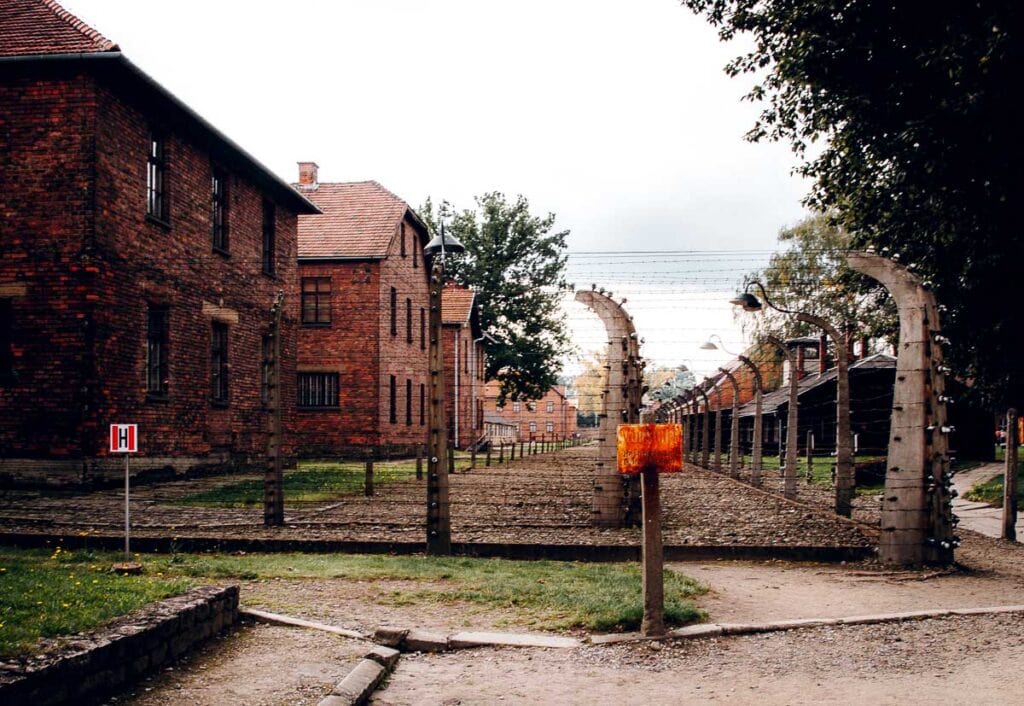
CAN YOU TOUR AUSCHWITZ AND WIELICZKA SALT MINE IN THE SAME DAY?
For some reason, a lot of travelers try to fit Auschwitz and Wieliczka Salt Mine into a single day excursion. I high recommend not doing this as you would be spreading yourself very thin. Both sites deserve separate days.
It not only takes an hour to drive between the two destinations, but both sites are massive and you would find yourself walking miles upon miles. If you are pressed for time and must see both sites in one day, I would recommend joining a tour (like this one) to take the guesswork out this endeavor.
If you are deciding on one tour or the other, I would without a doubt choose Auschwitz over Wieliczka Salt Mine.
RELATED POST: WIELICZKA SALT MINE (POLAND) – EVERYTHING YOU NEED TO KNOW
AUSCHWITZ HOURS
The Auschwitz Birkenau Museum is open year round except for January 1st, December 25th, and Easter Sunday. The current opening hours are:
- 8:00 AM – 2:00 PM December
- 8:00 AM – 3:00 PM January, November
- 8:00 AM – 4:00 PM February
- 8:00 AM – 5:00 PM March, October
- 8:00 AM – 6:00 PM April, May, September
- 8:00 AM – 7:00 PM June, July, August
AUSCHWITZ ACCESSIBILITY
Unfortunately, touring Auschwitz and Birkenau is not the most accessible for people with limited mobility and/or disabilities. The memorial has tried to preserve the original state of former camps as much as possible, which makes it very difficult for some travelers to visit. There is uneven ground (dirt, gravel, cobblestone), stairs, no ramps and tight hallways. There are also very few places to sit, if you need to rest.
Sylvia from Spin the Globe wrote an article encouraging wheelchair users to still visit Auschwitz, despite its accessibility flaws. Click here to read some of her tips.

KRAKOW TO AUSCHWITZ – HOW TO GET TO OSWIECIM
Auschwitz is located in the city of Oswiecim, 41 miles (66km) west of Krakow, Poland.
BUS OR MINIVAN
Taking a bus or minivan is one of the easiest ways to get from Krakow to Auschwitz. There are many departures per day and the journey takes around 1hr 30 min. Tickets cost between 13-15 zloty each way ($3.40 USD – $3.90 USD). Busses leave from the MDA bus station, located near Krakow Glowny train station on Bosaka Street. You can view the bus schedule here.
The bus line called Lajkonik will drop you off closest to the main gate at Auschwitz I near the parking lot. There are not many signs when you arrive but it is easy enough to figure out and if you are visiting during peak season, you can always follow the crowds.
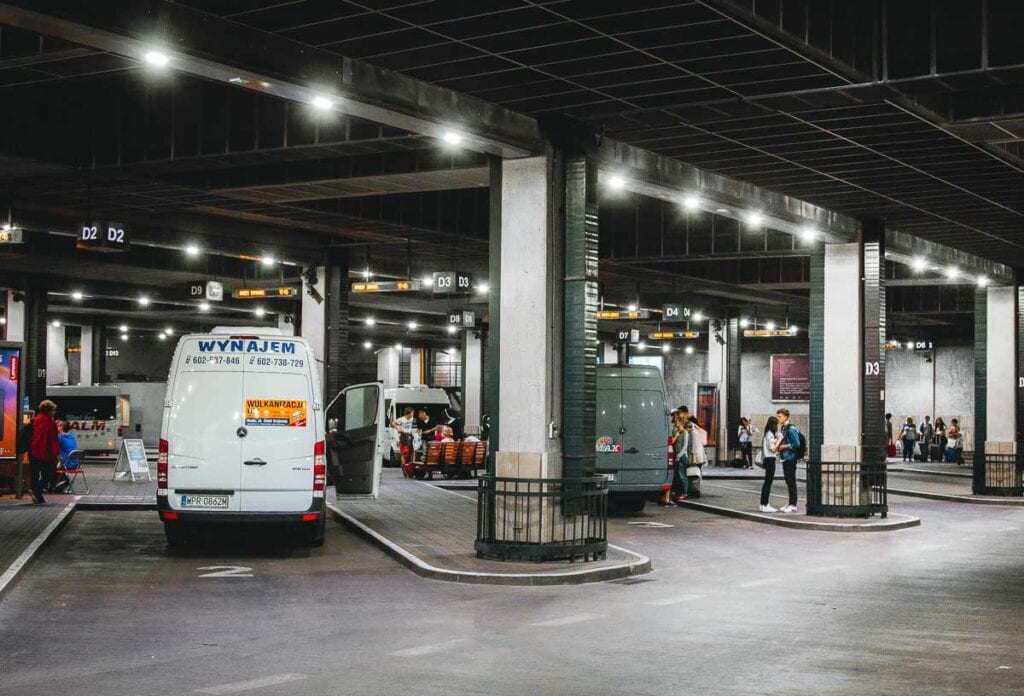
TRAIN
The train travels from the main train station, Krakow Glowny to Oswiecim. The journey takes between 1hr 25min and 2 hours, and costs 10 zloty ($2.60 cents) each way. The Oswiecim train station is located (1.36 miles) 2.2km from the Auschwitz so you will likely need to hop on a local bus (lines 24-29 stop at the museum), or call a taxi to complete the journey. Click here to view the train schedule.
GUIDED TOUR
Most Auschwitz-Birkenau guided tours leave from Krakow and include pick up and drop off. This tour includes door to door service, an English speaking guide, wifi on board and lunch. Pries range between $20USD and $50USD per person. Click here for more information or to book.
Luxury travelers might be interested in touring Auschwitz with a personal guide and a private driver. This option offers hotel pick up and drop off, transport via Mercedes-Benz cars with wifi, and a guided tour of Auschwitz. Prices start around $115USD per person. Click here for more information or to book.
UBER OR TAXI
Expect to pay between $52- $75USD each way.
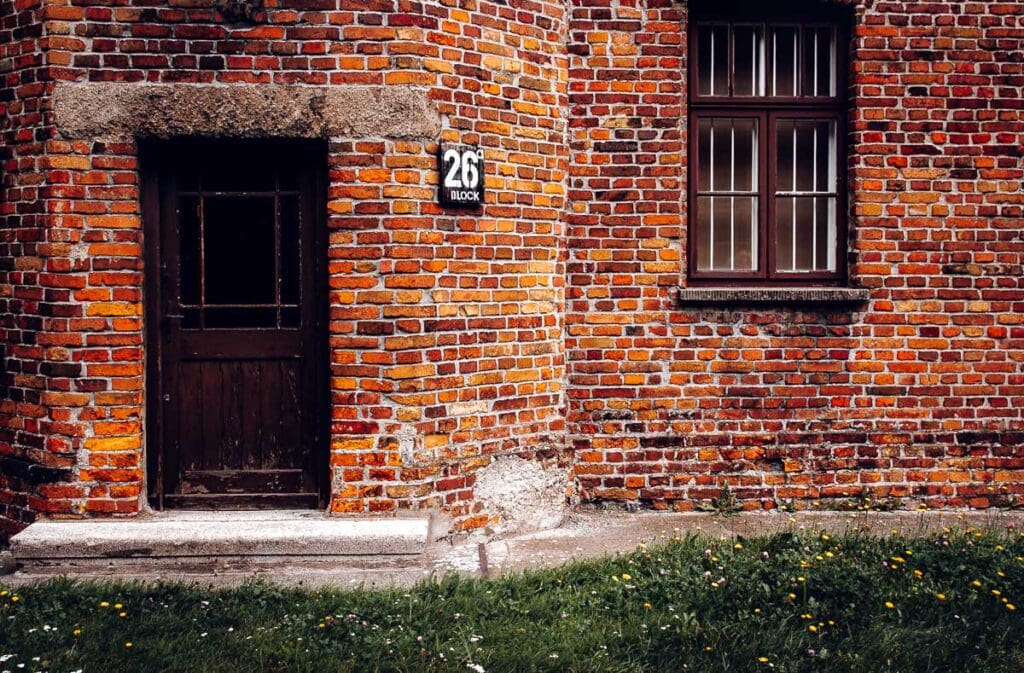
PIN IT: TOURING AUSCHWITZ – BIRKENAU / A VISITOR’S GUIDE + WHAT TO EXPECT ON THE 6 HOUR TOUR
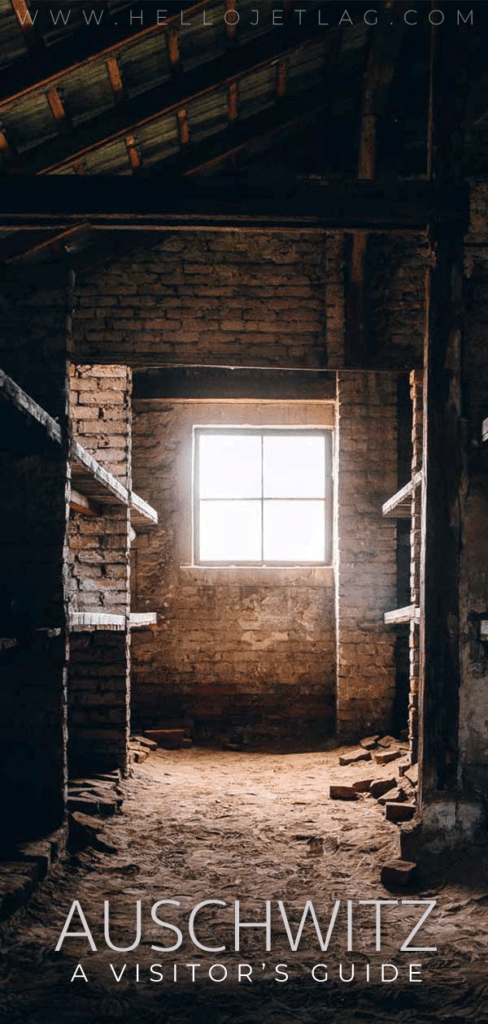
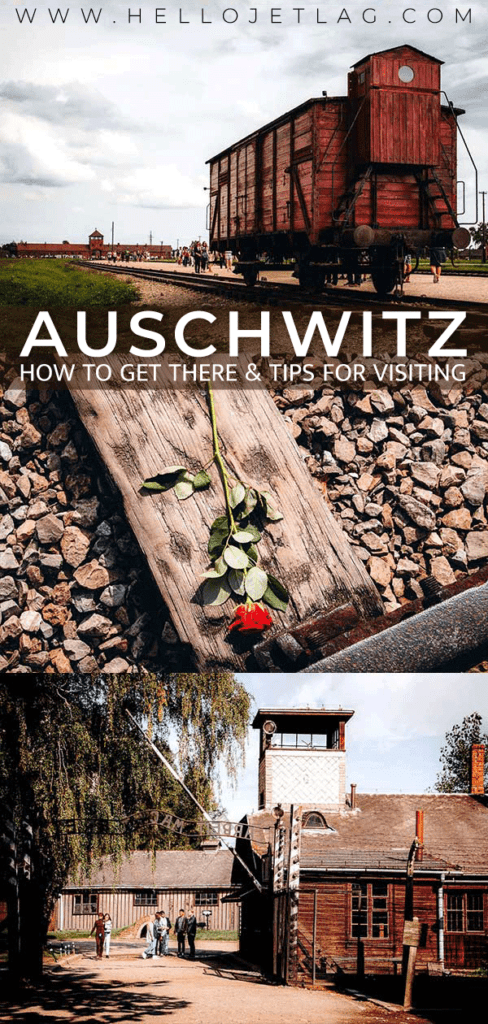
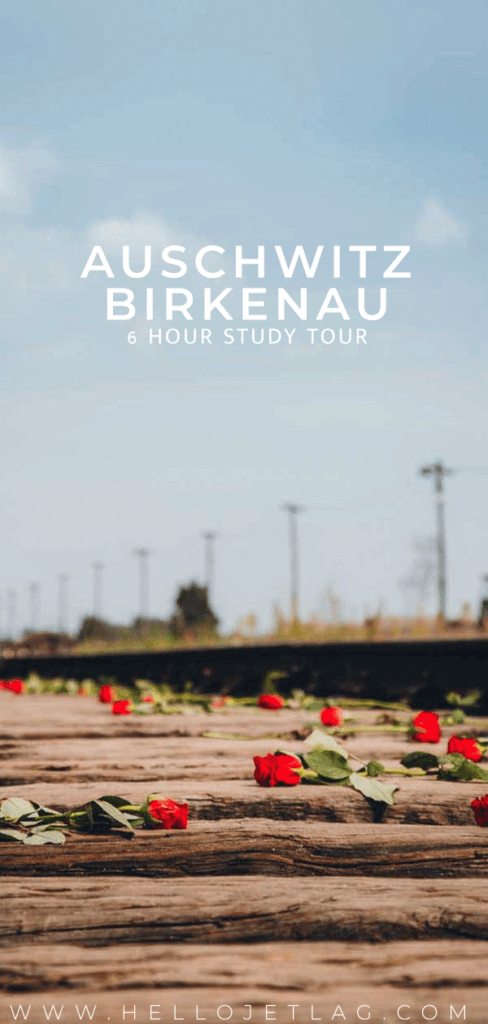
Disclaimer: This post contains affiliate links.

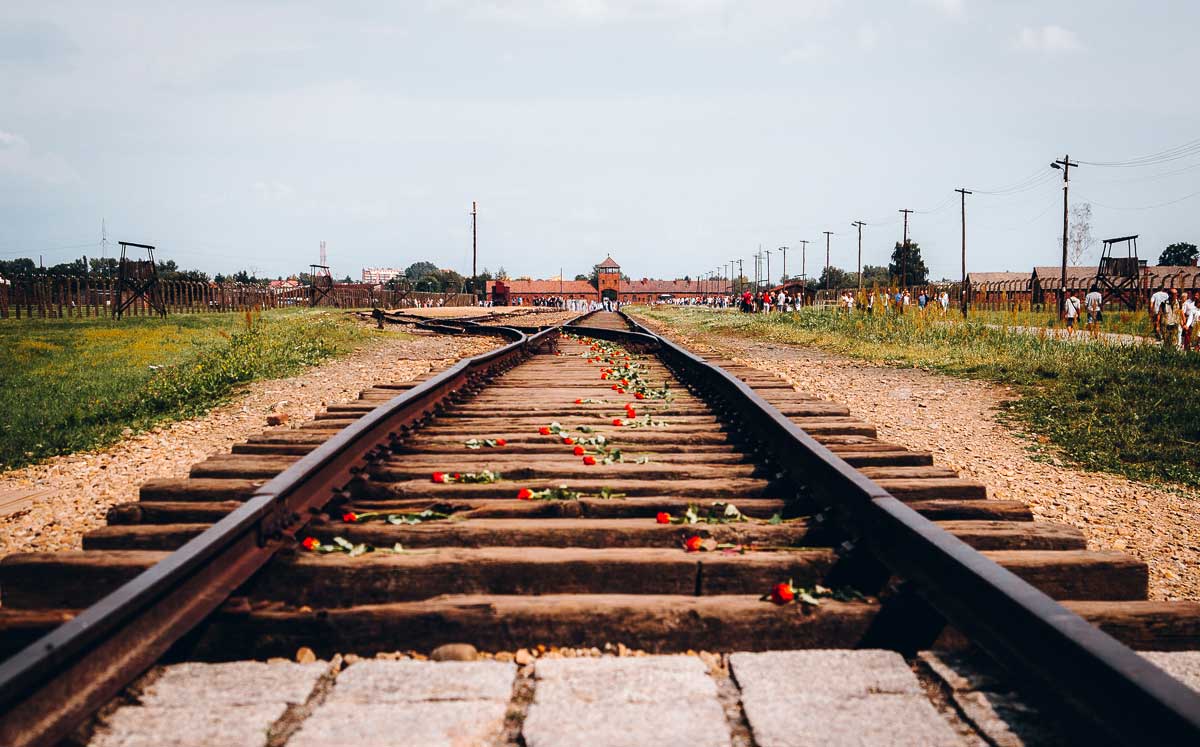
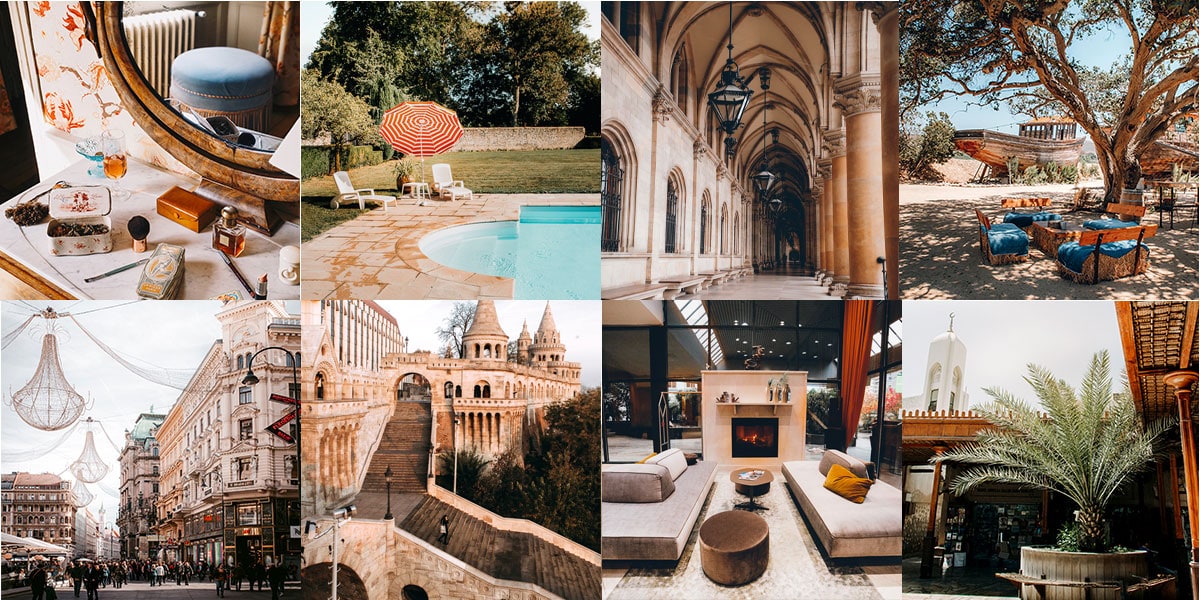

Hi, thank you very much for your post, it is very interesting and your photography is amazing. I will be visiting Auschwitz soon and was wondering if you would recommend the 6 hour tour or the shorter 3 hour tour and then having our own time to look around?
Hey Catilin!
Auschwitz I was the camp where I really wanted more time, but on both tours you leave Auschwitz I with the group and almost immediately shuttle to Birkenau. So you wouldn’t have time there to explore on your own either way. At Birkenau, you have ample time to walk around on your own after the tour though. So with that said, I would still recommend the 6 hour tour.
Hope this helps, thank you for reading!
Hi! Thank you for your post, it was very detailed and interesting.
I was wondering; is a tour really worth it or would it be better to just walk around Auschwitz I and Birkenau alone (without a guide), to take our time? Do you learn more with a guide than you do by reading the descriptions in each site? I really don’t want to feel rushed and on a schedule throughout the visit…
Hi Ombeline!
I really did learn so much with the guide. There are information plaques at Auschwitz I but they mostly talk about what’s on display and they definitely didn’t go into as many details as the guide gave us. There were not as many information plaques at Birkenau.
Even though I really wish I had more time in each room at Auschwitz, I don’t regret joining the tour and would probably do it again.
Hope this helps!
Lindsey
Thank you for your pictures and commentary. I will be visiting Auschwitz in August, 2018. After reading your commentary, I will be signing up for the 6 hour tour. Did you travel from Krakow that day via public transportation or did you travel on your own? I plan on taking public bus transportation from Krakow in the morning and touring Auschwitz that day. Can you offer any advice with traveling to Auschwitz with public transportation? I am flying from Krakow to Berlin that night after my tour at Auschwitz, so have to make sure I have enough time to travel back to Krakow via bus, so am hoping that I can fit this all in and still make my flight. (I see the 6 hour tour begins at 0900) Also, did you utilize the luggage area in the museum for any oversized baggage? I emailed the museum, and it was not clear whether it was a locked area or not, although she stated that there were no size limitations. (I will be traveling right from Auschwitz back to the airport in Krakow). Thank you for any more advice you may be able to offer. Again, your photos and commentary are wonderful, albeit very somber, and brought tears to my eyes.
Julie Rahaim
Cumberland, WI USA
Hi Julie!
We traveled from Krakow via bus (it’s more of a shuttle van) to Osweicim and it was very easy. We picked us the bus at the bus station which next to the main train station, and bought our tickets there (they were cheap.. I think around $3-4). The bus to Auschwitz was located on the lower level of the station and the journey was around 1hr 30 min. We got there early just in case because there aren’t that many seats on the busses. The bus will drop you off about 3-5 min from Auschwitz I. Chances are most people will be getting off there so we just followed the crowd. I remember it being pretty self explanatory. On the way home, you pick up the bus at the same spot and there are regular busses to Krakow so you shouldn’t have to wait long. You can check out this page for rough schedule times http://rozklady.mda.malopolska.pl/?lang=eng
I didn’t utilize the luggage storage area at Auschwitz, but I saw it. There are no lockers, it’s more of a kiosk where you can check your pieces in and out with the attendant. Another option could be to leave your luggage at the Krakow Train station as it’s located right next to the bus station. The only issue is that they filled up quickly when we were there. If they are full, there’s also locked luggage storage at the Galeria Krakowska Mall which is also located next to the train/bus station. It’s basically right across the street with easy access bridges from the train station. So I think you will definitely be able to find a place for your luggage 🙂
Hope this help, let me know if you have any more questions!
Lindsey
Hi Lindsey,
Thank you so much for your reply! Your comments on transportation were very helpful, and I will check out the link you sent. For my one night in Krakow, I’m staying at Hotel Europejski https://www.google.com/maps/place/Lubicz+5,+Kraków,+Poland/@50.064479,19.9440594,17z/data=!3m1!4b1!4m5!3m4!1s0x47165b10bdf2aa63:0x33f2943e5ef8e810!8m2!3d50.064479!4d19.9462481
and it looks like it’s not too far from the bus station. Did you travel alone or with others? How safe is it? I have not traveled abroad before, and I am on my own for this part of my trip, so any advice is much appreciated! I am looking forward to my adventure over in Germany and Poland in a few months! If I have any other questions, I will let you know!
Again, thanks for your advice!
Julie
Hi Julie!
I stayed in an Airbnb near your Krakow hotel and it’s definitely an easy walk to the train/bus station.
I traveled with my boyfriend while in Krakow but would 100% feel safe going back alone. It felt safer than many other bigger European cities that I’ve been to, actually. I have also done solo traveling in other parts of Poland and feel very comfortable in this country in general.
Do you use Google Maps on your phone? I always download an offline map and save pins where my hotel is, sites I want to see, restaurants I want to visit etc. So even if you lose service (or don’t have an international plan), your location/map will still work and you can get directions easily.
In Krakow, you have to validate your public transportation tickets when you get on. You’ll see little yellow machines on the bus/trams that you stick your ticket into. Sometimes plainclothes officers will check tickets randomly and it’s easy to miss if you’re not familiar with the system.
I’m excited for you to take your first trip abroad! I know that you’re going to love it, and Germany and Poland are great places to start. If I think of anything else that might help you, I’ll let you know.
Lindsey
Hi, this is very helpful! Thank you! I think I will sign up for the 6-hour tour. How did lunch work during the tour? Is there a place and time to buy it?
After you visit Auschwitz I, they give you a short break to eat before heading to Birkenau. There is a small cafeteria on site with a few lunch options and snacks. Or you can bring your own and store it in the lockers. Hope this helps!
Lindsey thank you for this post! I’ve been researching my visit to Auschwitz for a long time and been going round and round in circles to find the best visit type to make the most of it – I’ve even tried calling Auschwitz’ mainline number but no reply. I didn’t know whether to book a standard tour that picks you up at your hotel, to book the 3 or 6 hours study tour, or if it was best to go by myself. Thanks to your blog I’m now going to sign up for the 6 hour study tour 🙂
Thanks so much for your comment, Miranda! I’m glad you found what you were looking for. I think you’ll be happy with your decision to do the 6 hour tour, there is so much to learn and process, I really couldn’t imagine going much faster than we did.
Safe travels!
Lindsey
Thank you for your interesting article & photos.
I am wondering if you think doing the 2 day study tour would be worthwhile considering you felt rushed on the 1 day?
Hi Angela,
I don’t think the 2 day study tour was an option when I visited, but I would have definitely considered it. I do have a lot of interest in WWII though. I think the 1 day would be enough for most casual visitors.
Lindsey
Thanks for the interesting and informative post! I am heading to Poland next month and am leaning toward the study tour. Do these tours take place alongside the regular ones? Or are you a bit more “off to the side?” One of my concerns is with crowds and the dates that work best for me are already on the weekend. I’ve heard that Auschwitz has become so crowded with visitors, especially on the weekends and in summer, that it really makes it hard to listen and concentrate. Thanks! Caroline
Hi Caroline!
Yes, the study tour is done alongside the other tours and visitors. Some of the rooms did get a little crowded but it didn’t feel too distracting. You are given headphones which makes it easy to hear your guide. Also the guides speak very quietly into their microphones and everyone was pretty respectful so if you were to take your headphones off, it’s almost silent. Even with lots of people.
The tour groups also seemed to be slightly staggered in times. We didn’t visit on a weekend or Summer though so I understand your concern. I hope this helps a bit!
Lindsey